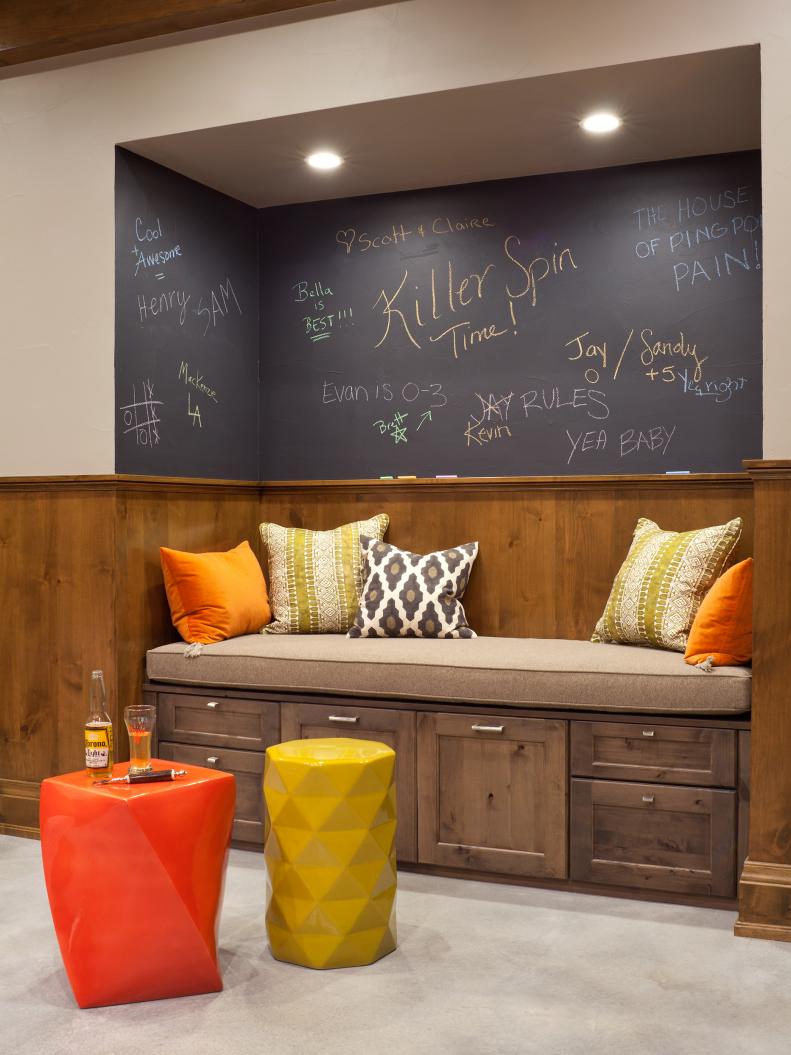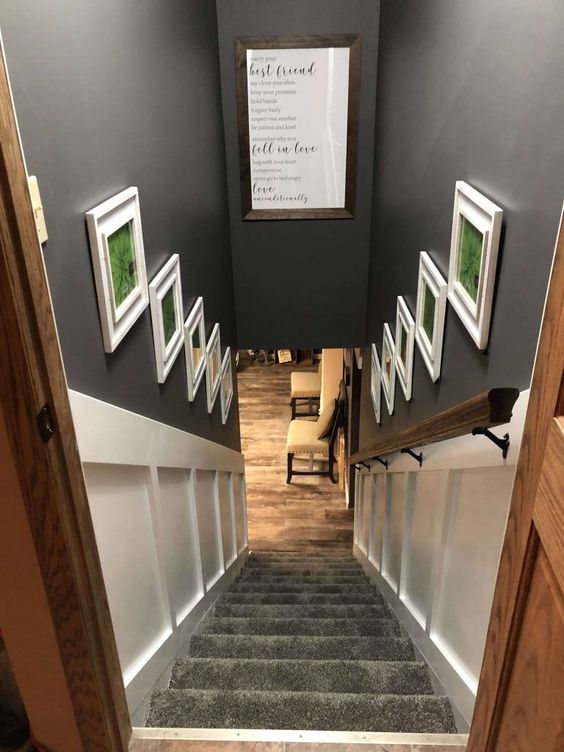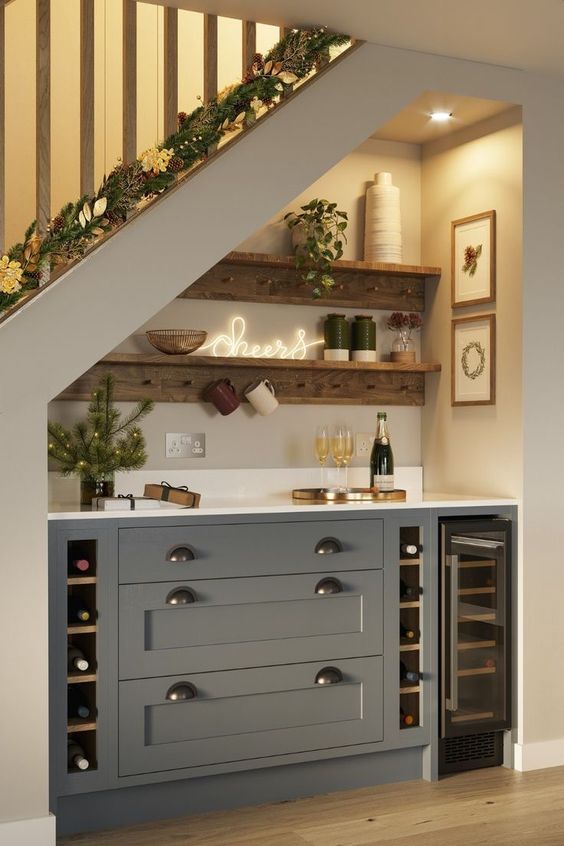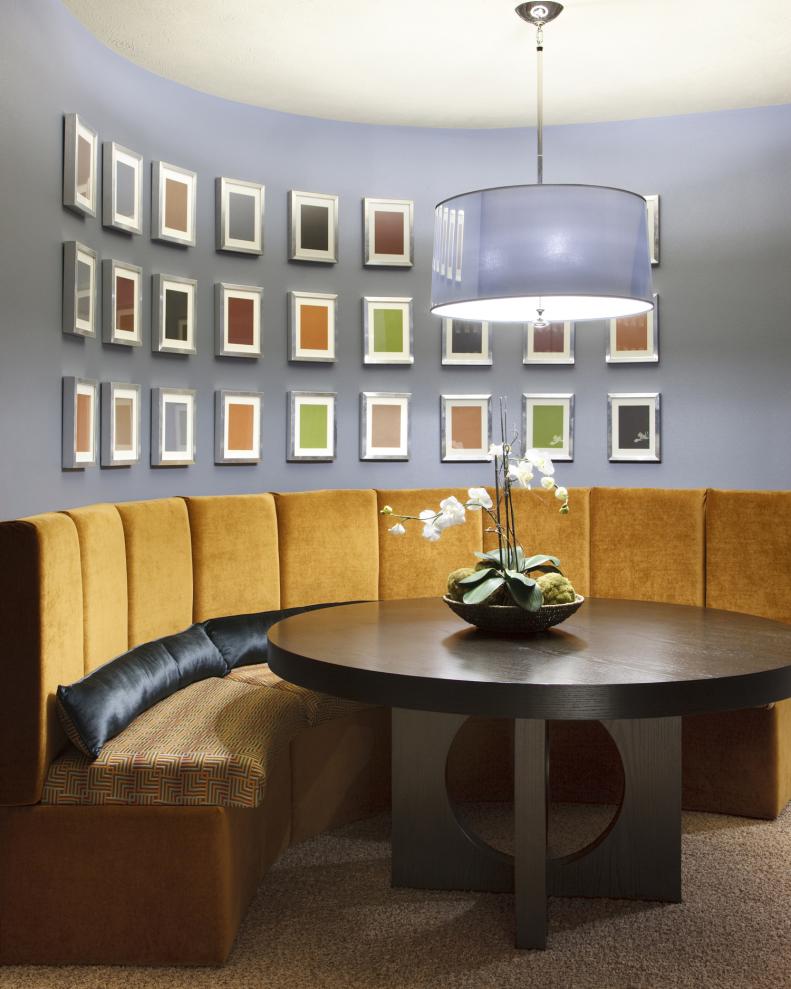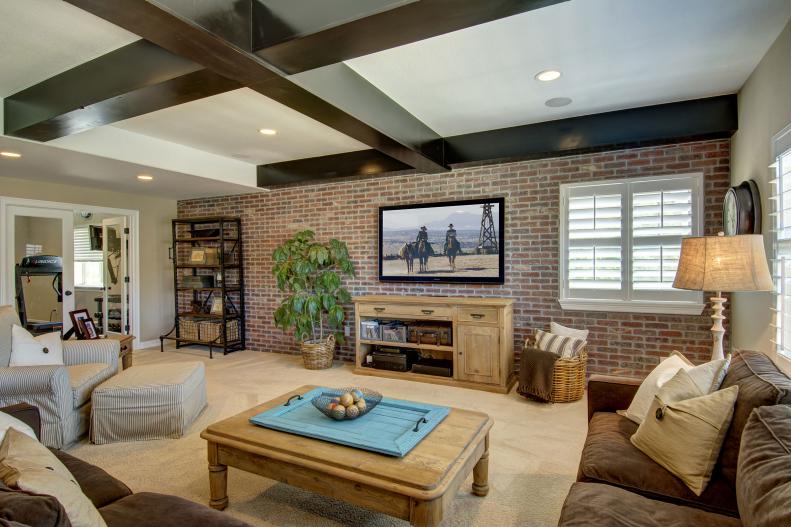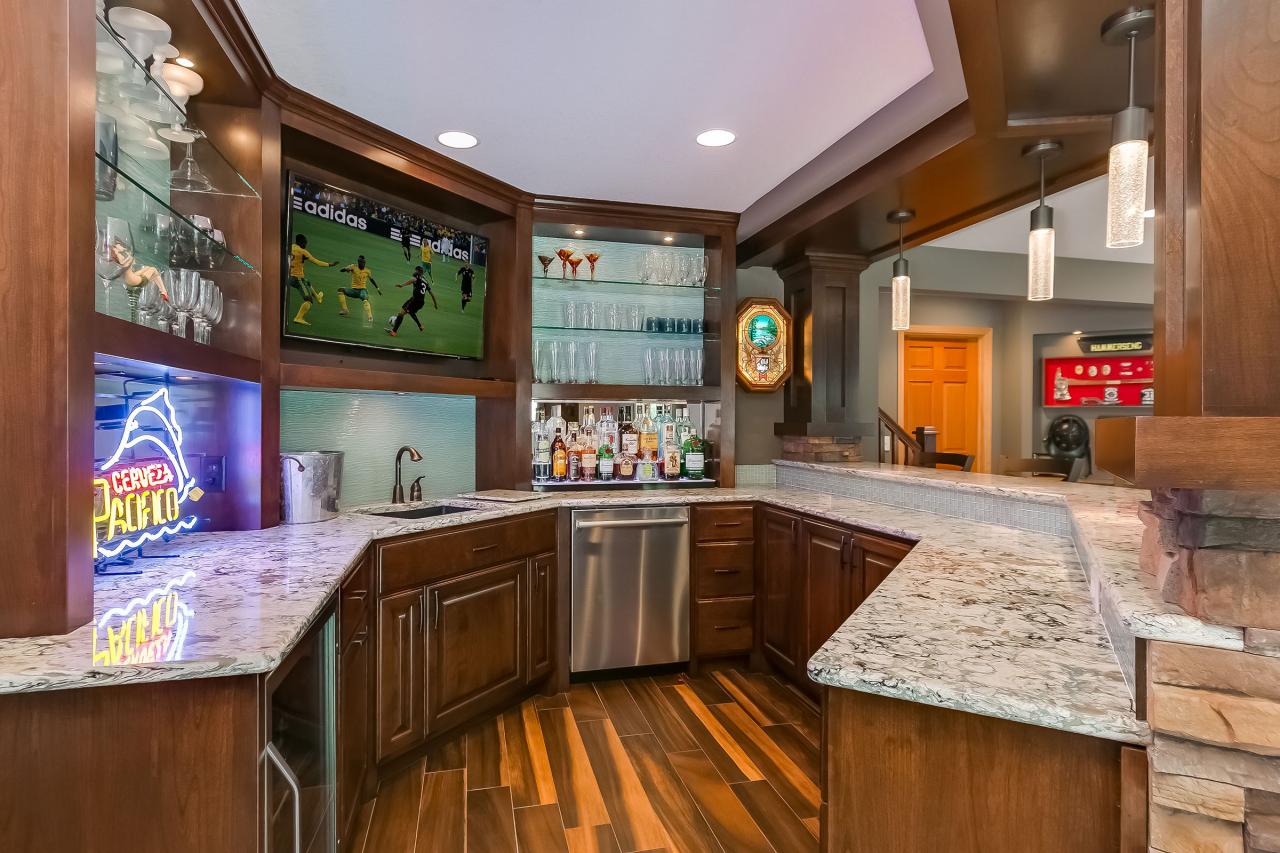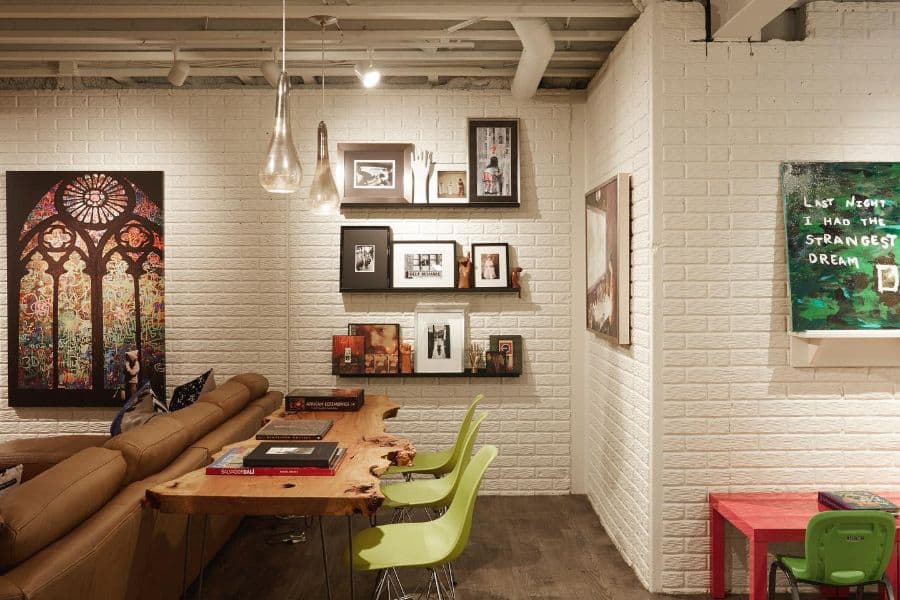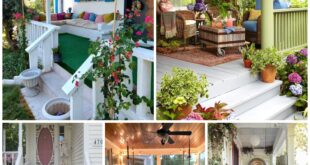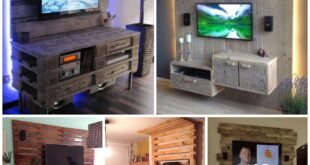Your finished basement is the perfect opportunity to add more usable space to your home. This square footage is just under your house. Why not make it more than just storage space?
There are several unfinished basement ideas, but you should look beyond these. Instead, focus on ideas that will help you finish the room. This makes it more inviting and comfortable.
These basement wall ideas will inspire you to transform your basement into your new favorite place.
1. Black Basement Wall Ideas
Don’t be afraid to paint your basement walls black. With the right lighting and furnishings, you can prevent your basement from looking like a dark basement. Try choosing one of your basement walls as an accent wall. Then you can paint that one wall black.
You can also commit to painting all the walls black to create a sleek basement bar vibe. Or you could adopt a masculine man cave feel.
Use ceiling lights to illuminate the different areas. This helps define the space and ensure the basement appears bright. You can also balance the black with light wood flooring.
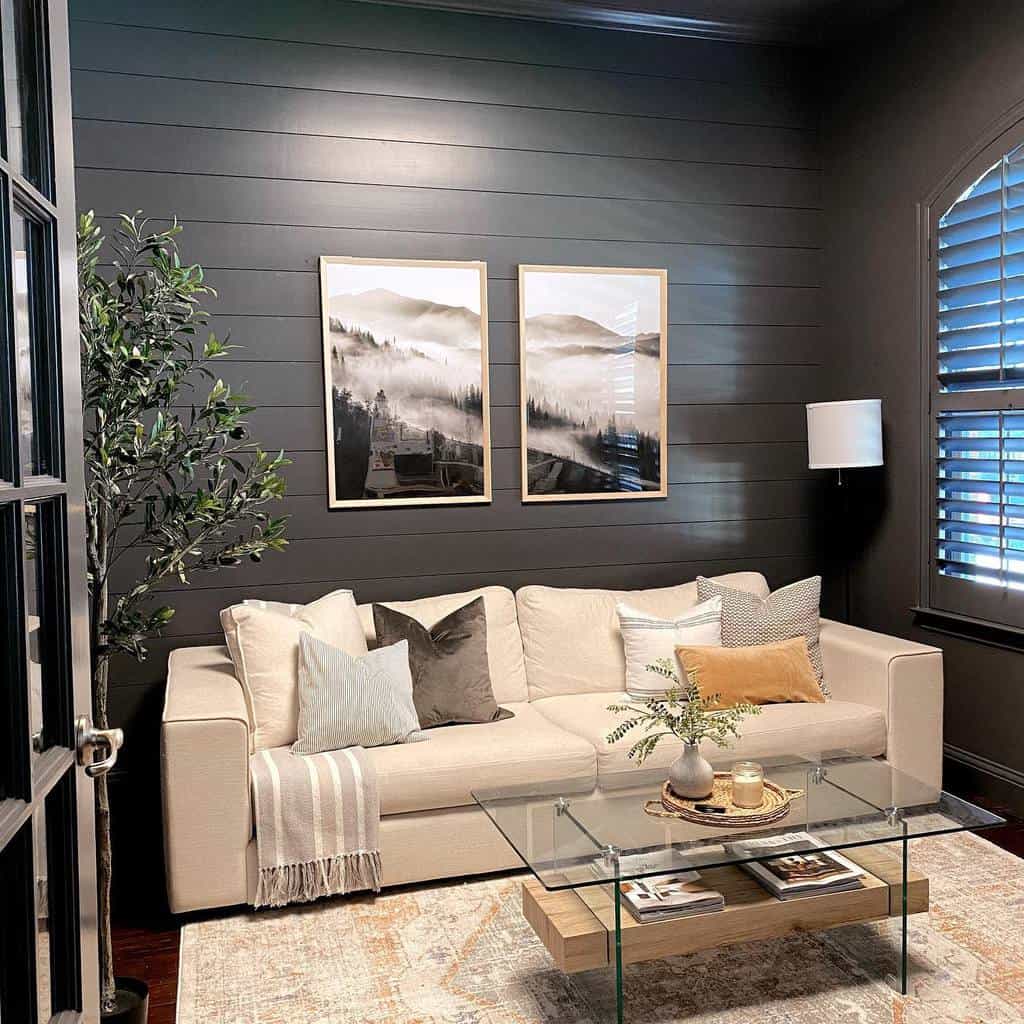
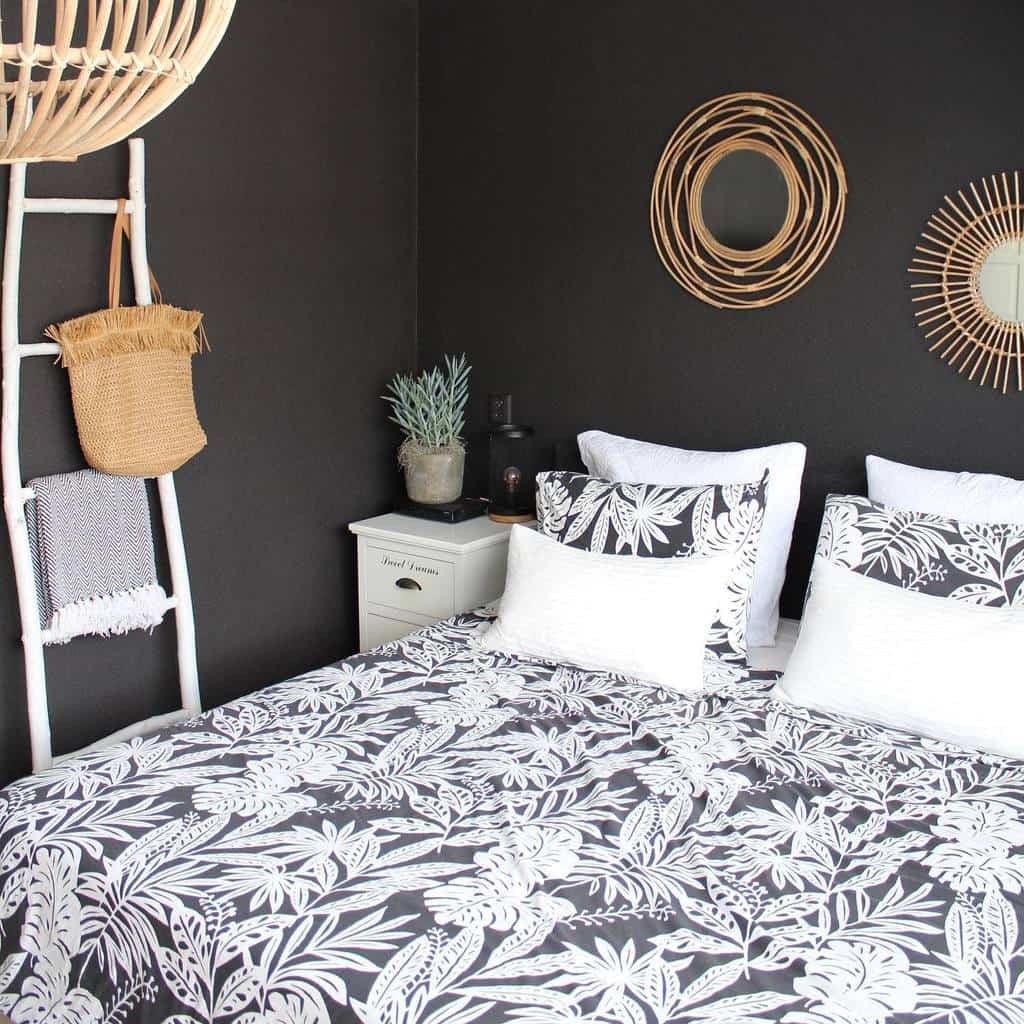
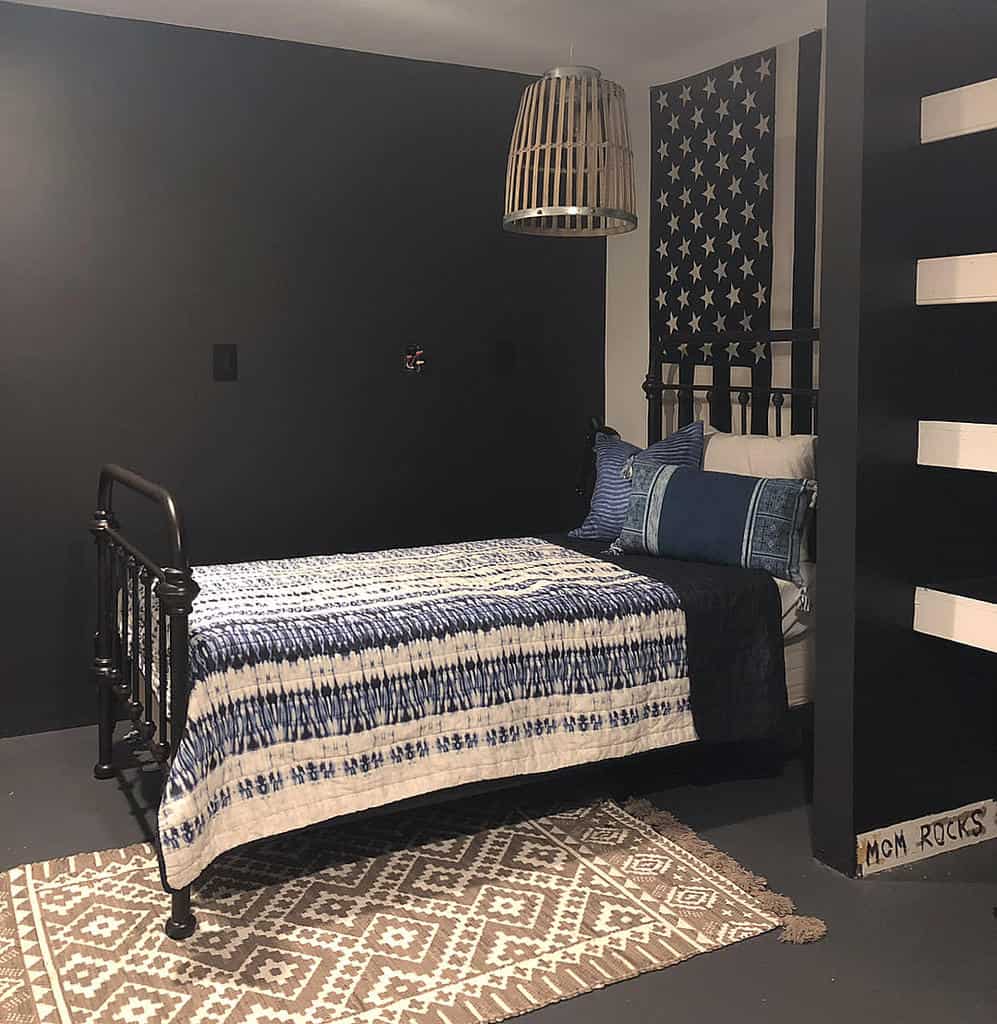
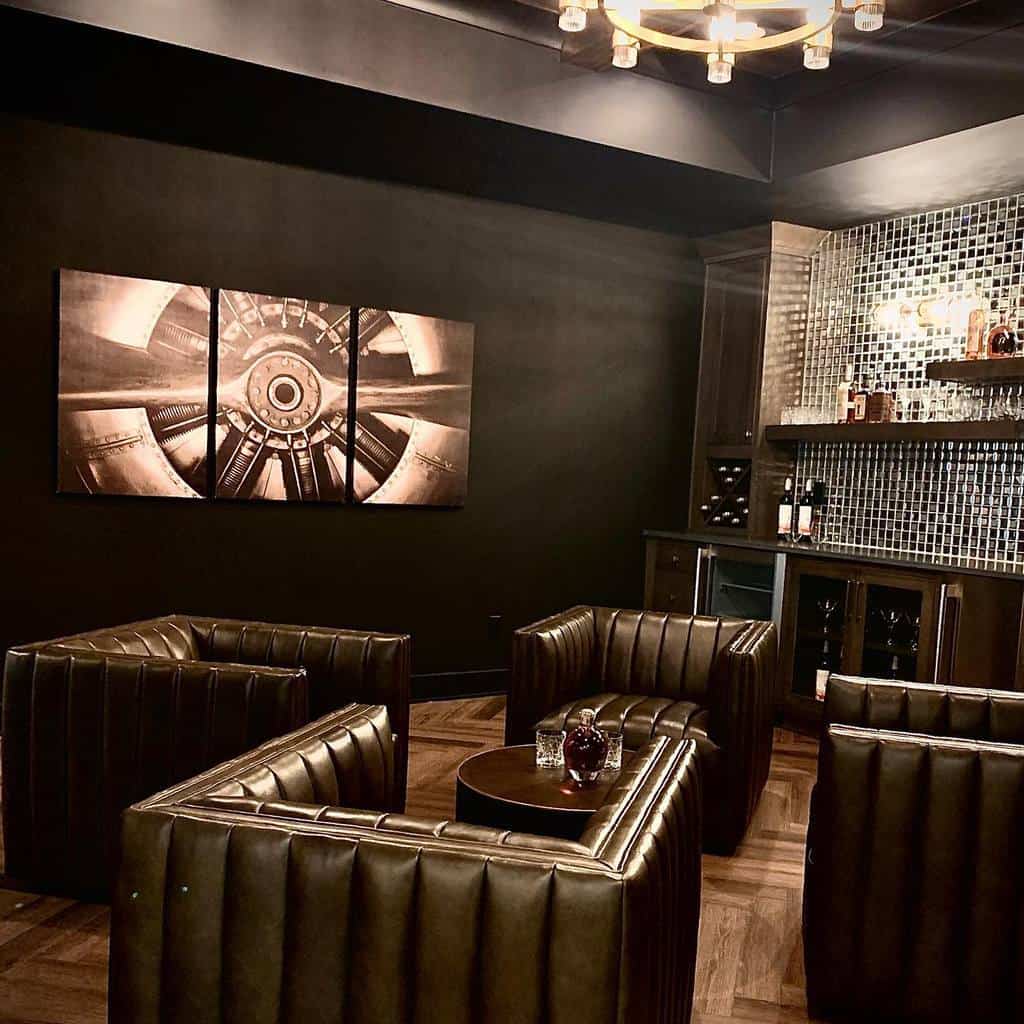
2. Creative inspirations
Leaving your basement wall bare and exposing the concrete block can create a modern and industrial feel. This creates an unfinished basement look with minimal effort. However, it doesn’t give the warmest or coziest feeling.
Try painting the cinder blocks for a simple and affordable finished basement. You may need to apply a moisture barrier first or risk causing the paint to bubble and peel. The foundation walls are covered with earth on the outside. Moisture in the soil can seep into your basement through the cinder block.
Avoid a concrete floor with concrete walls. This is too concrete and creates a feeling of nakedness that resonates.
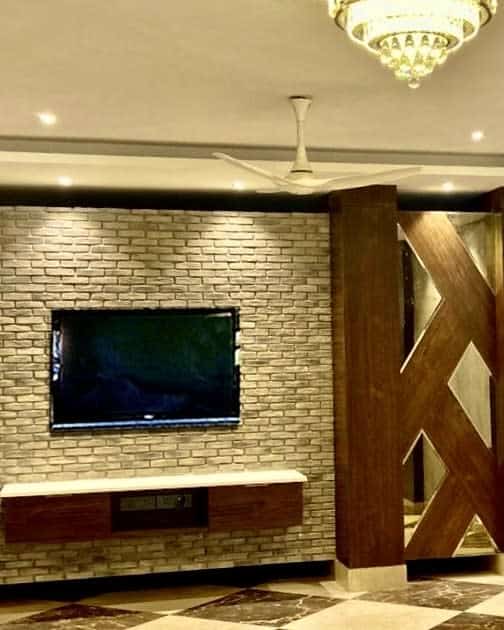
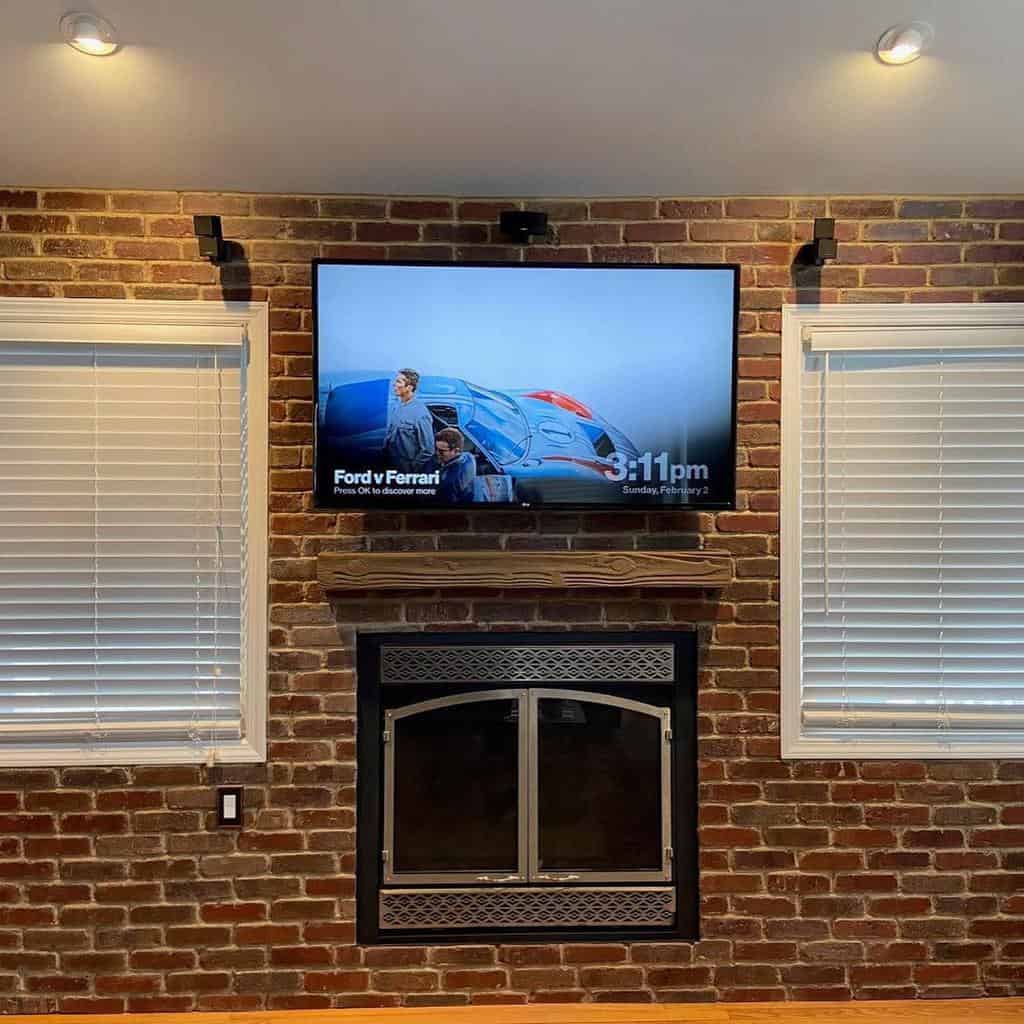
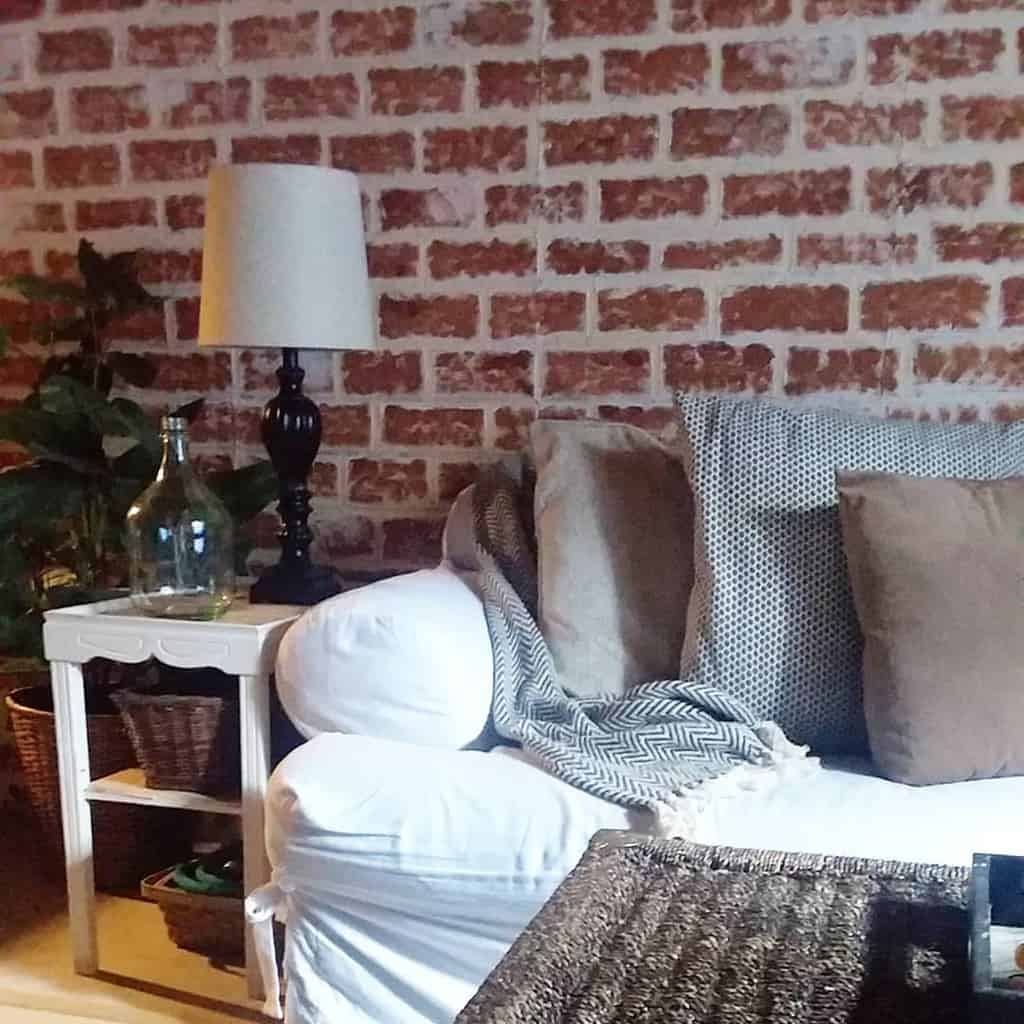
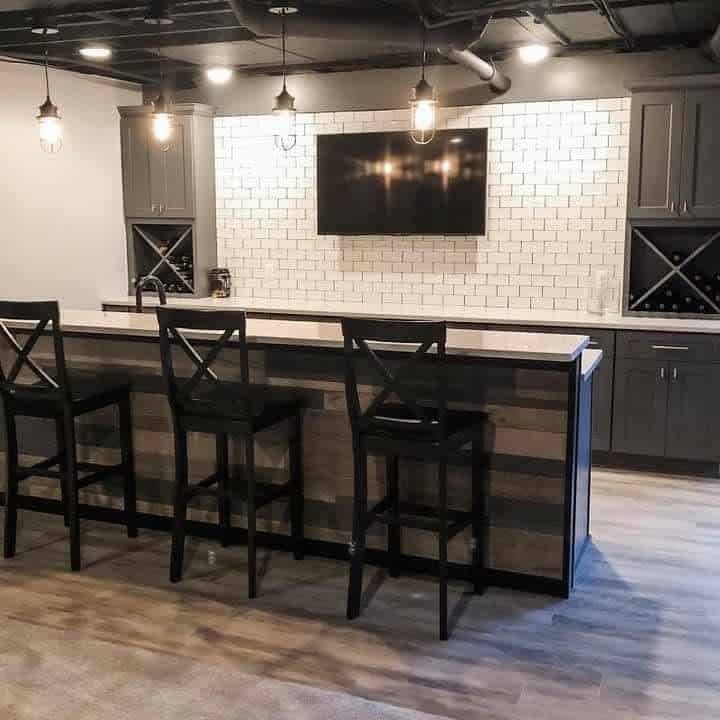
3. Stylish concrete ideas
If you don’t want to spoil the look of your unfinished basement walls, you have options. Transform that concrete wall into something beautiful with a simple coat of paint. Complete the concrete basement wall with drywall, wainscoting, shiplap or wallpaper.
Whatever you choose for the wall, make sure it matches your chosen basement floor. The two must work together to create a unified look throughout the basement.
Don’t choose a rustic wall design and then an ultra-modern floor. It also doesn’t look good when two types of wood are similar but not exactly the same. Either they have to match or be completely different.
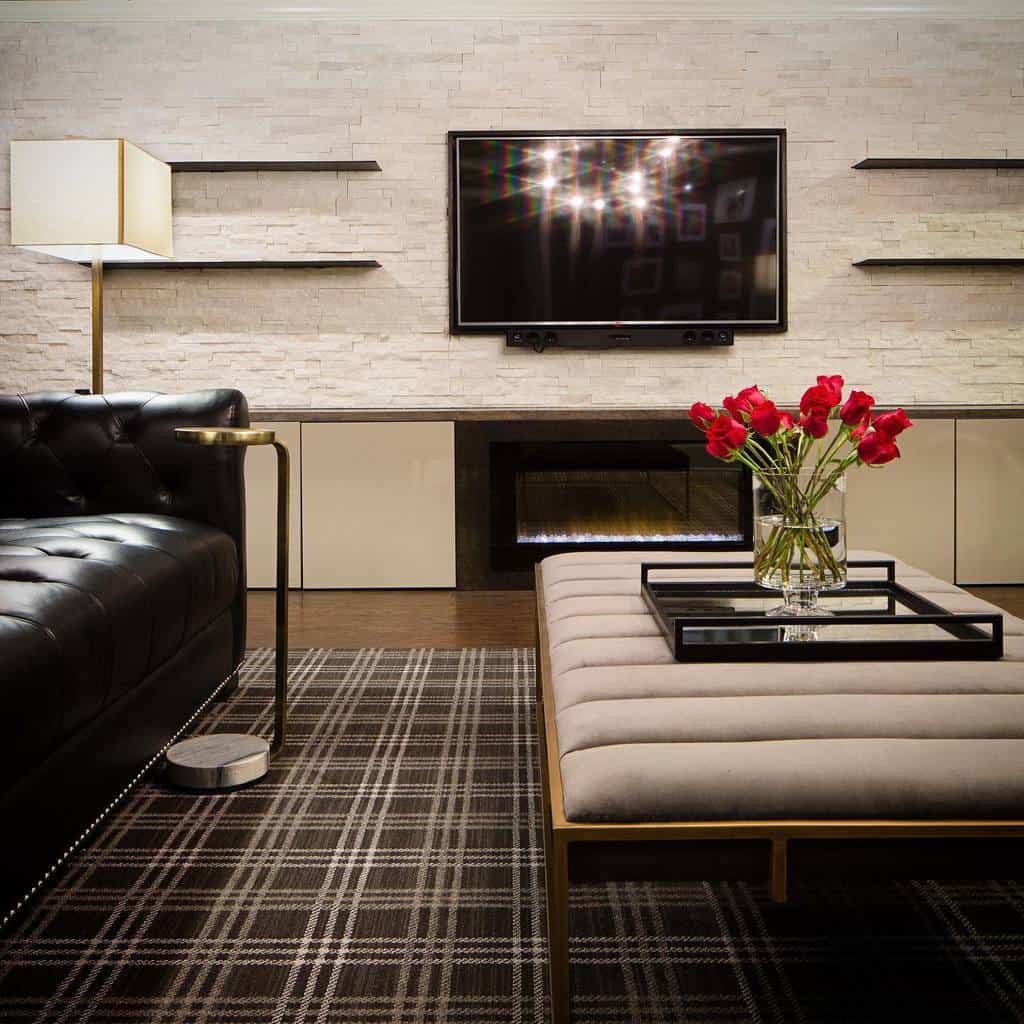
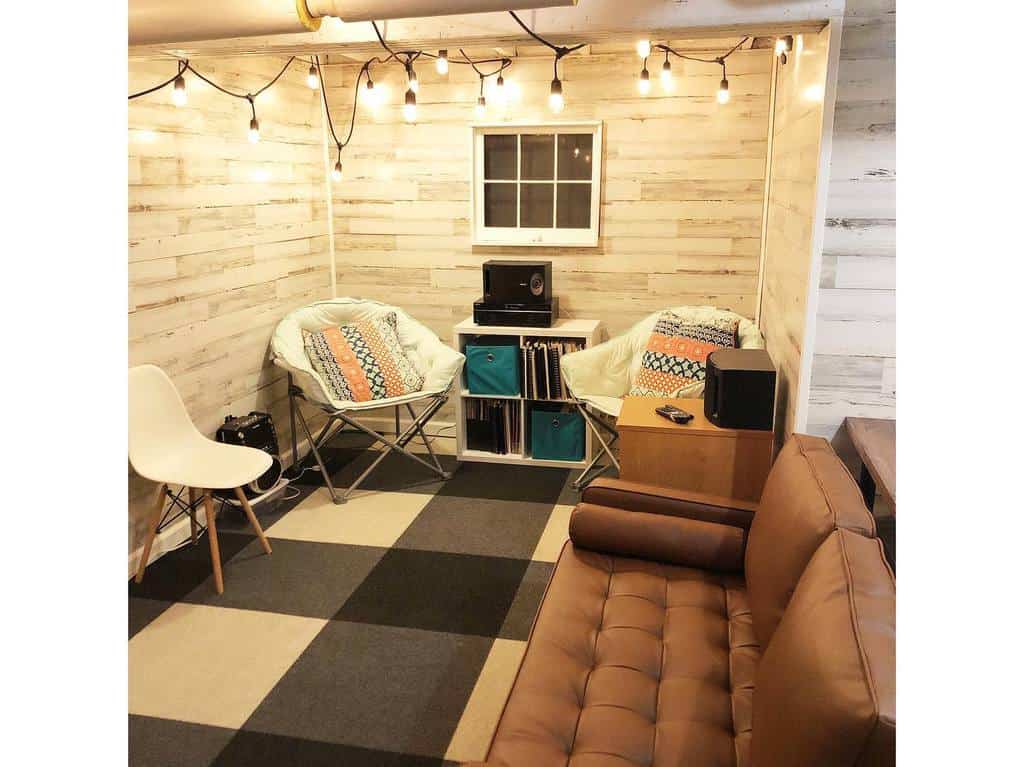
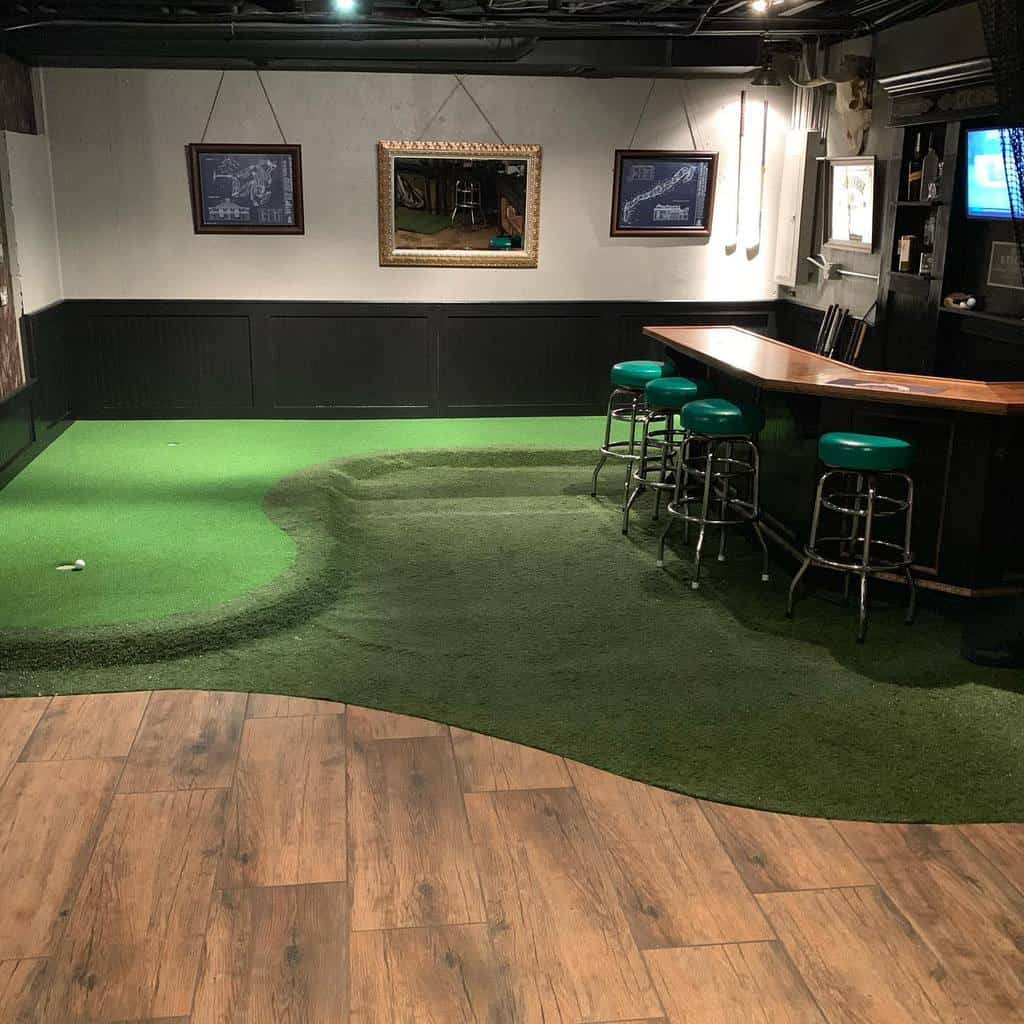
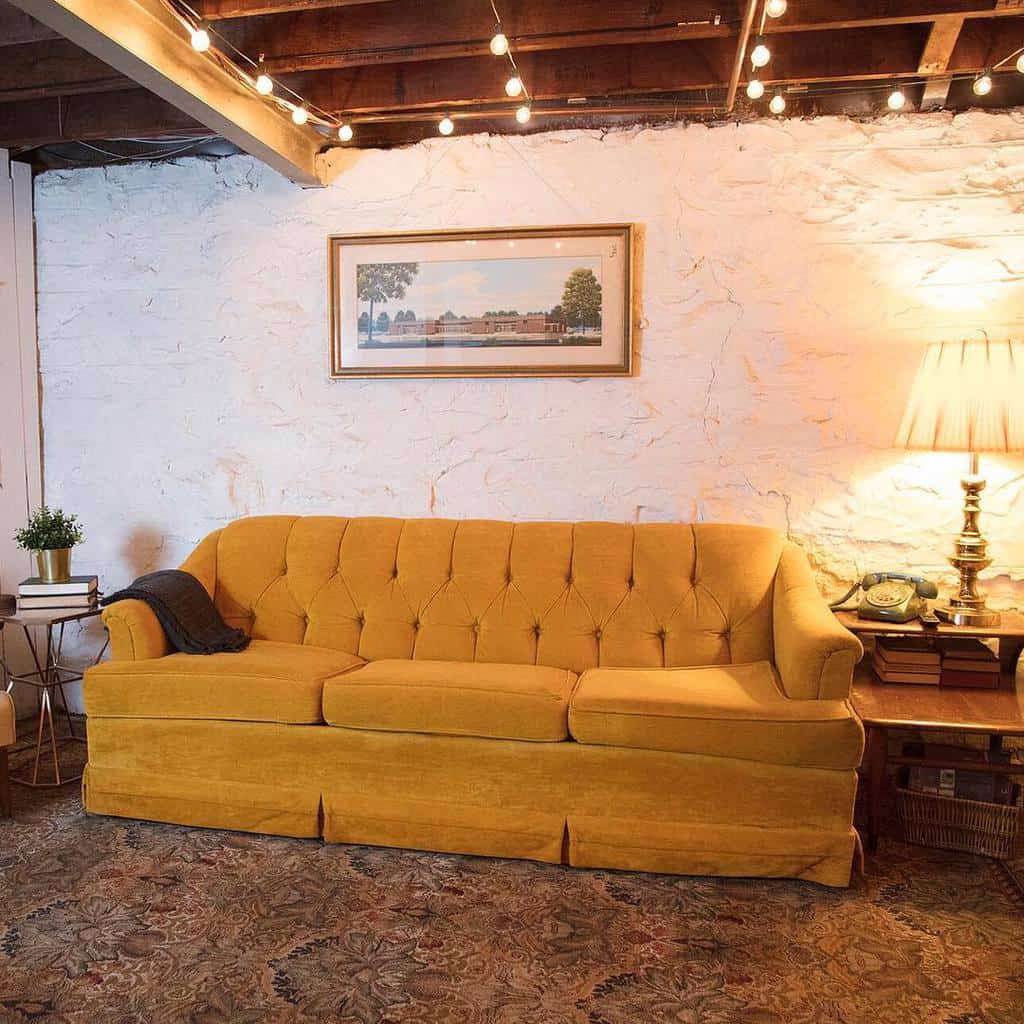
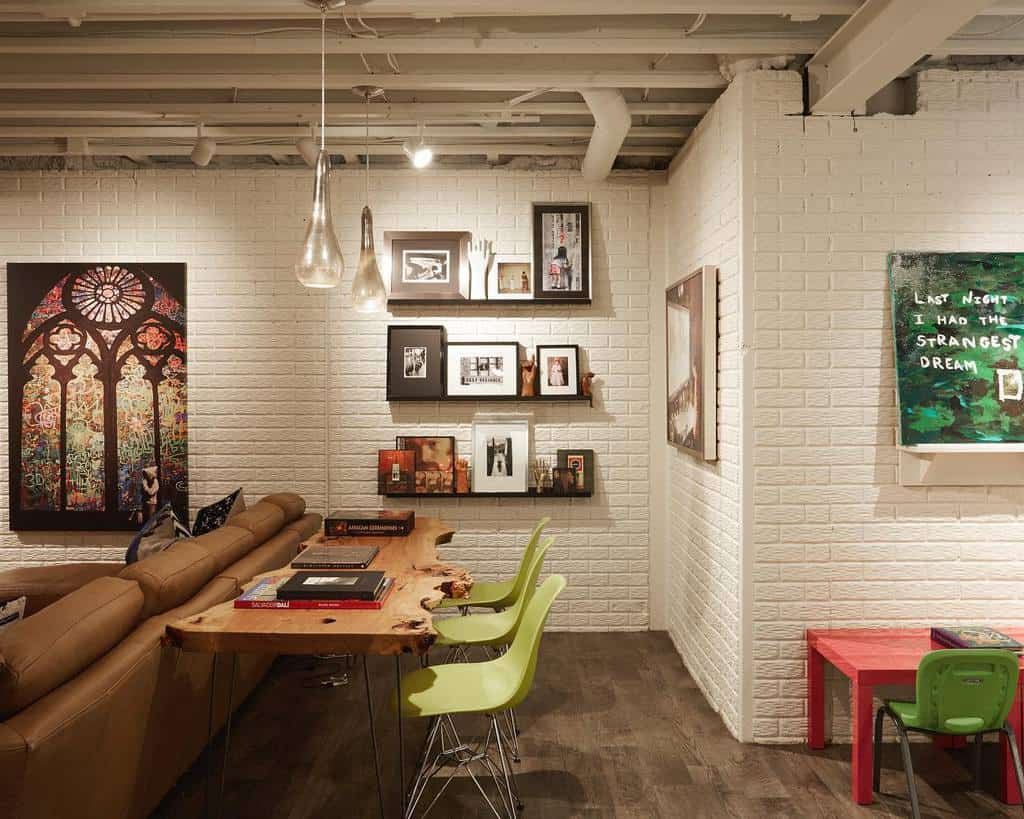
4. Budget friendly
If you are handy and have experience with home construction projects, you can carry out the basement conversion yourself. Start by treating your concrete walls with a vapor barrier. This prevents moisture from penetrating from outside.
Then insulate the room with foam insulation, spray foam, or other insulating material. You should install insulation between the furring strips and around any basement windows.
Then mount the drywall onto the battens and wall studs. The finished product should be a smooth wall that prevents moisture from entering and heat from escaping.
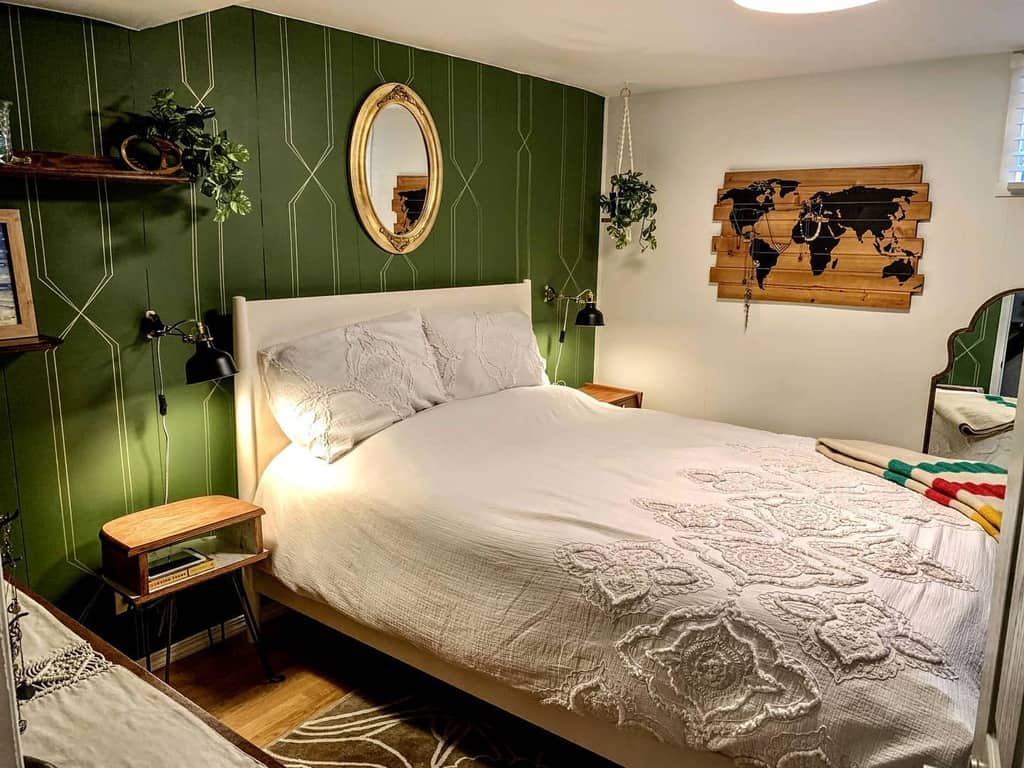
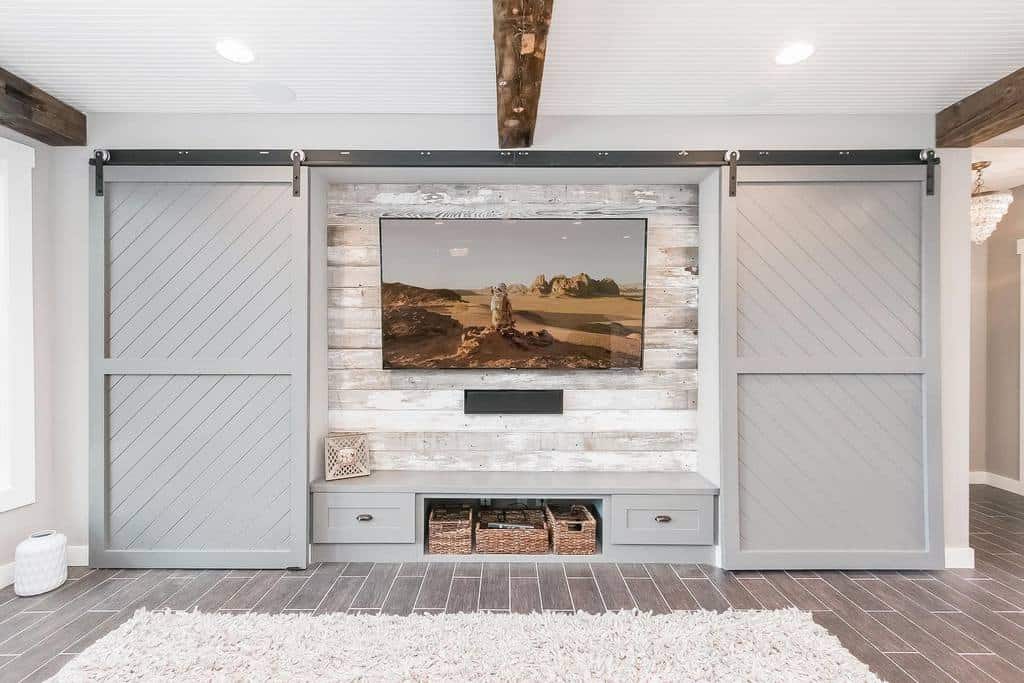
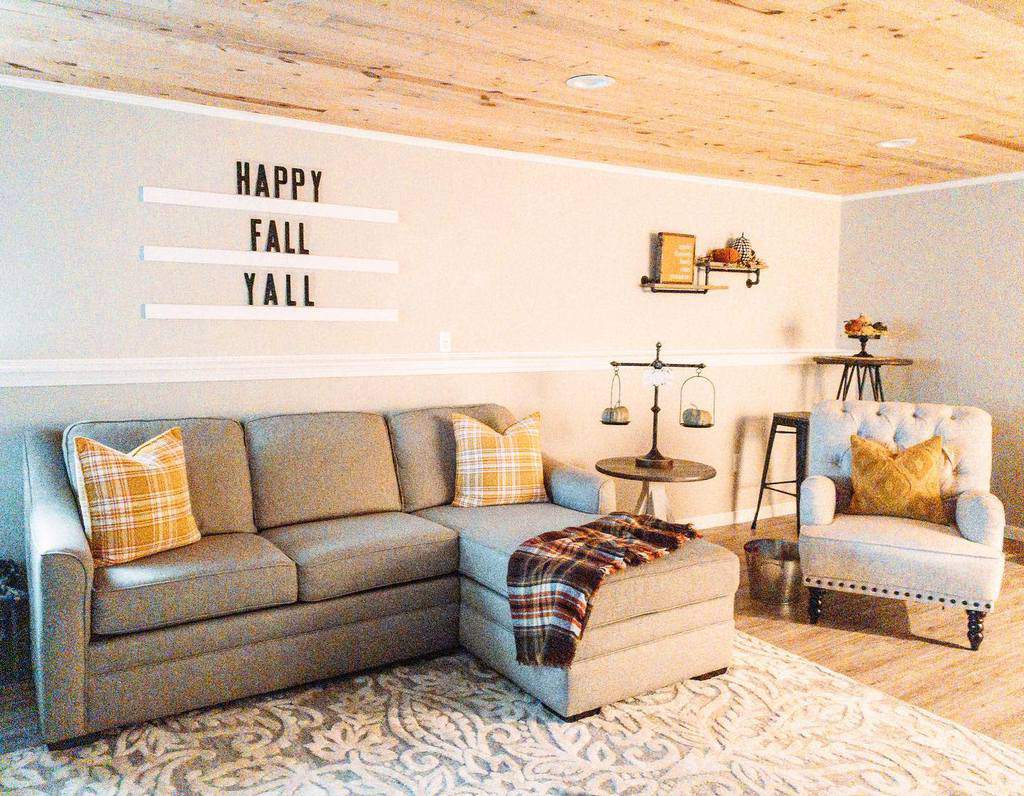
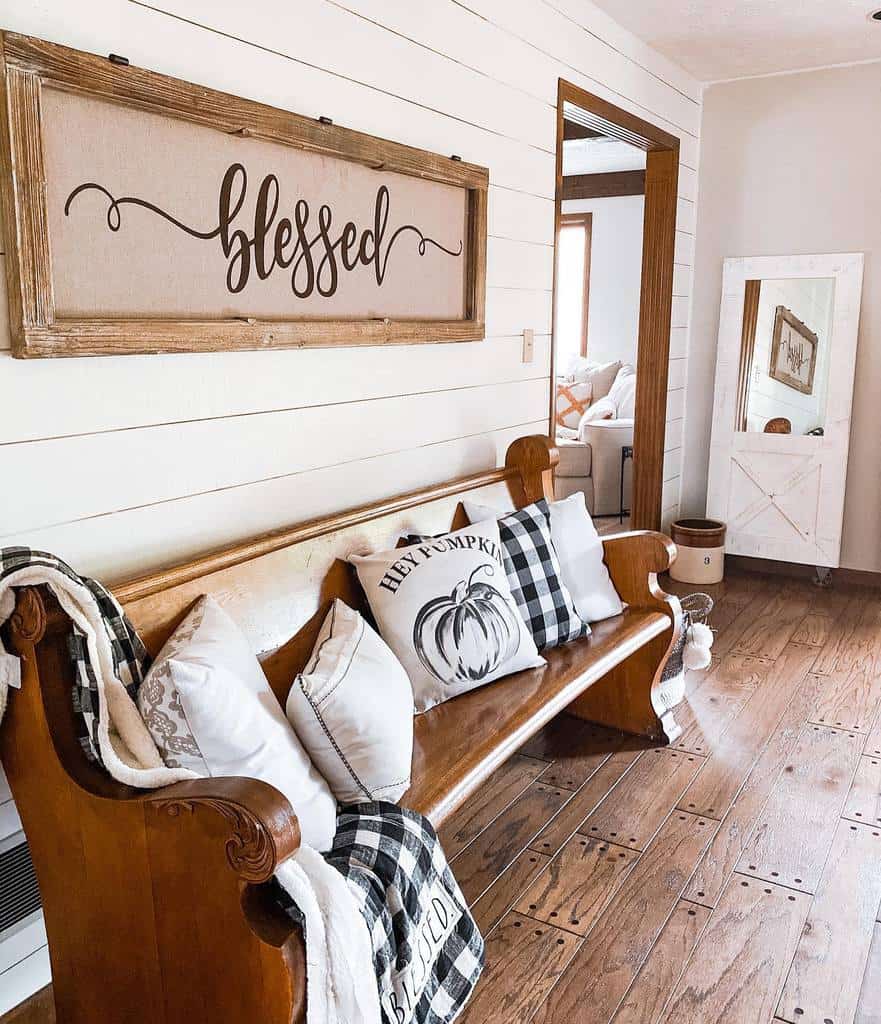
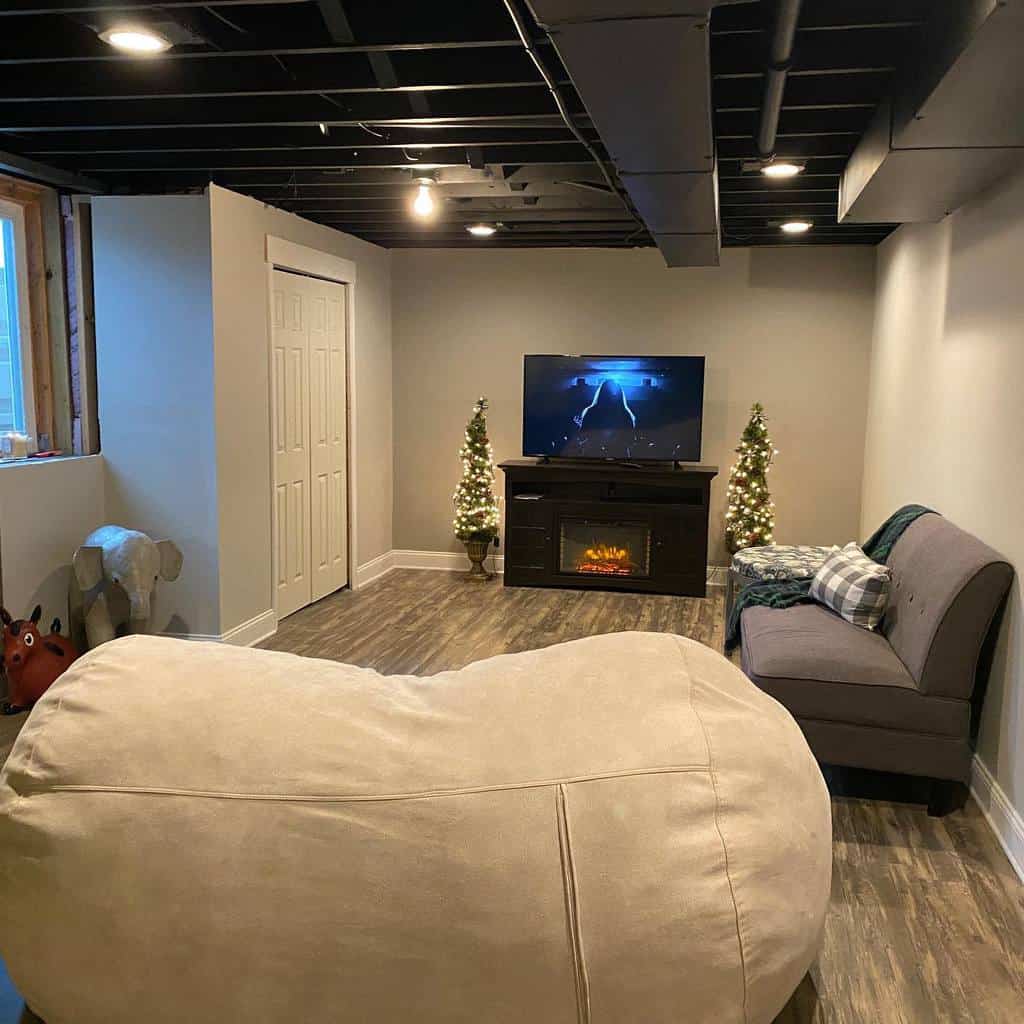
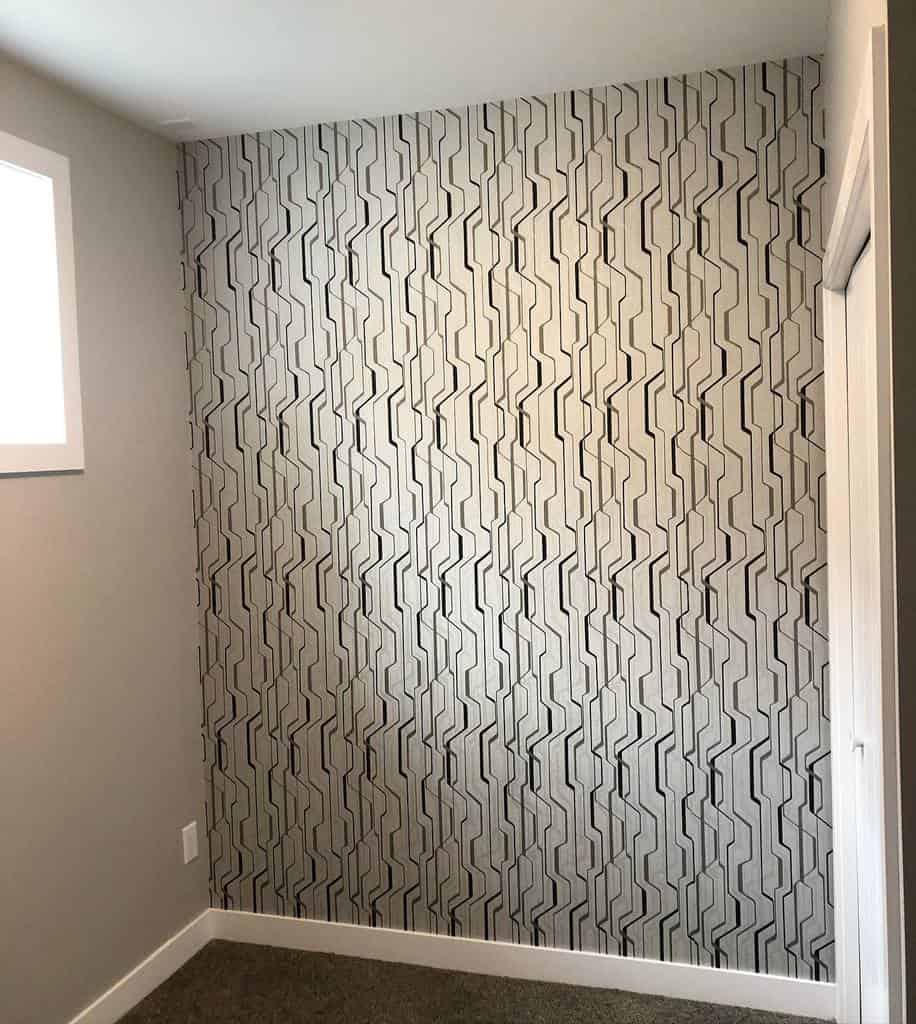
5. Adopt contemporary style
Modern interior design requires most of the work in your basement. However, this also makes your basement look the most similar to the rest of your finished home.
The walls should be white or light, then lay wooden floors. Build a drop ceiling to hide all plumbing, electrical and HVAC systems.
With a finished basement, you could turn part of it into your laundry room. This means you have more space upstairs. Convert your old laundry room into a walk-in closet or other small usable space.
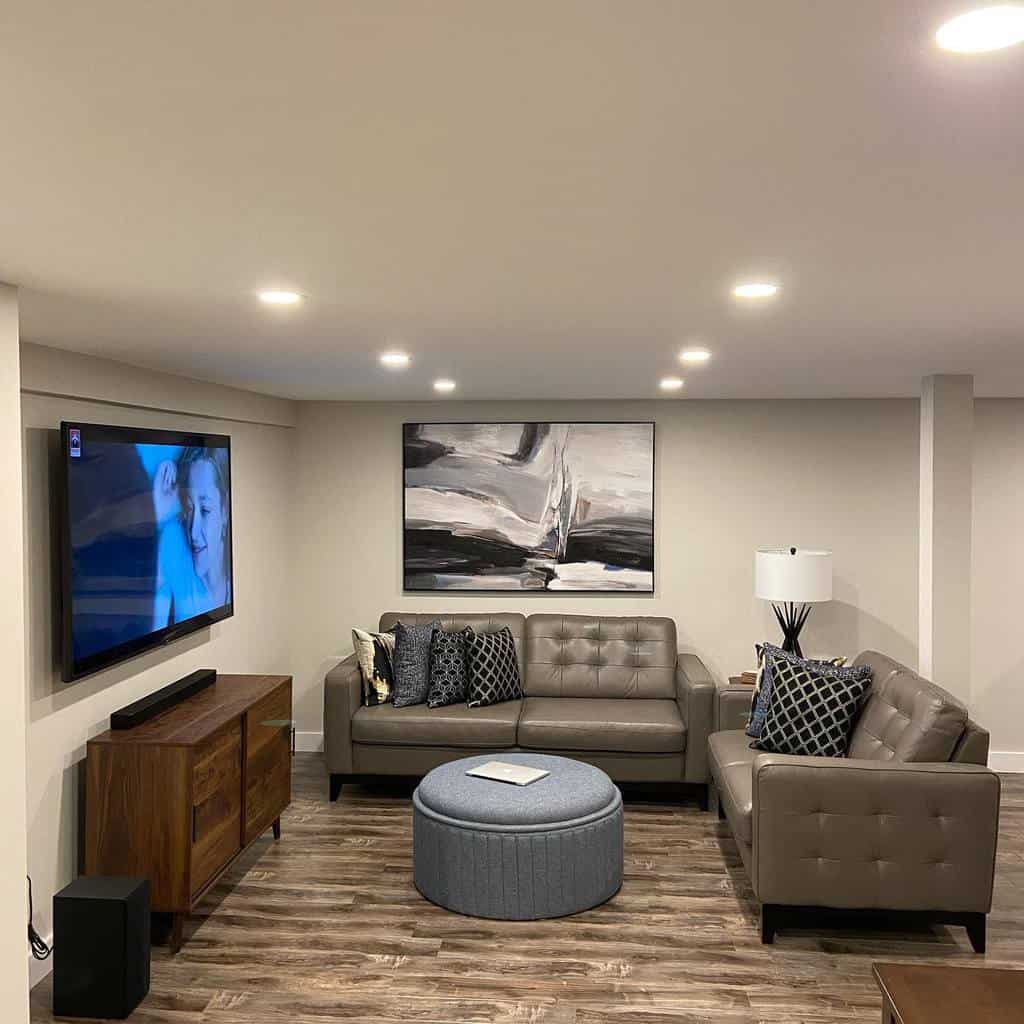
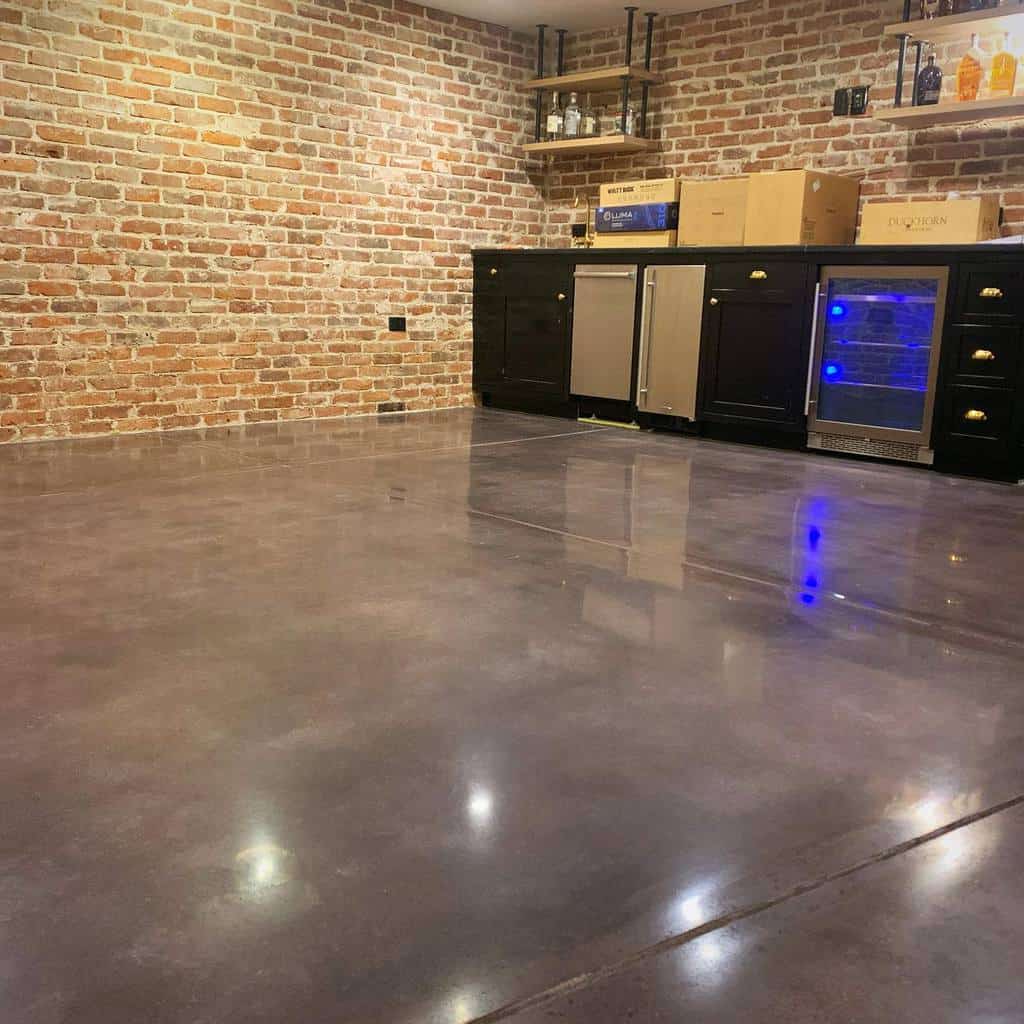
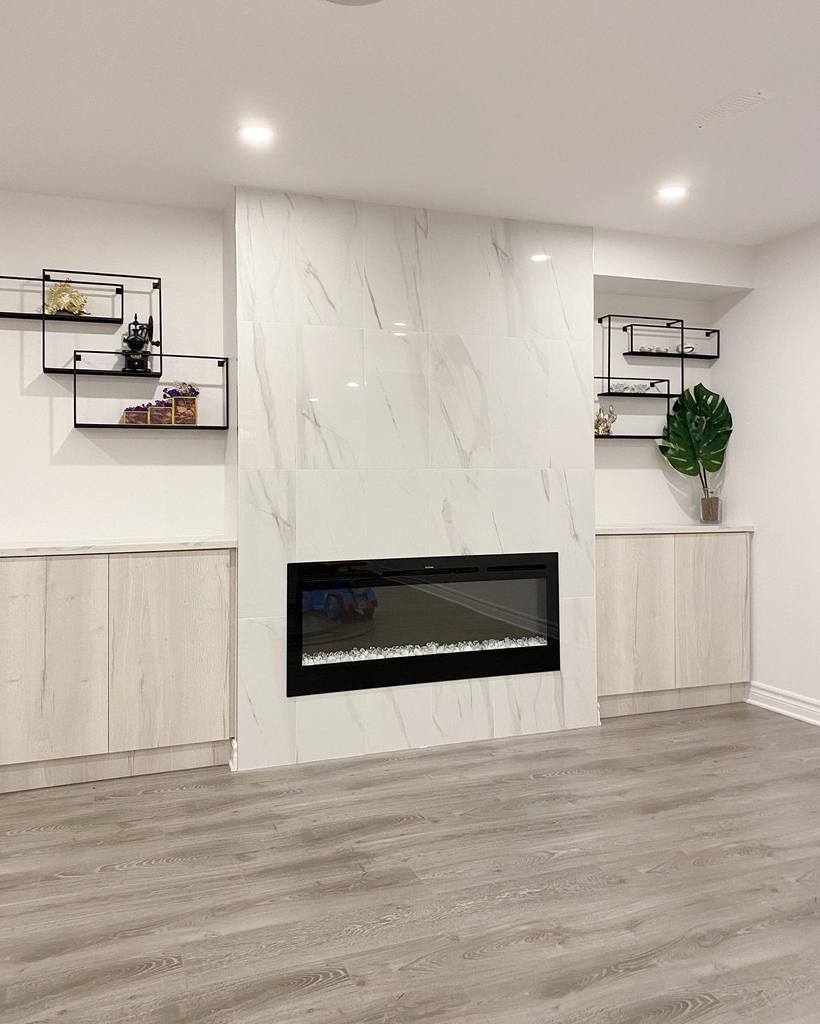
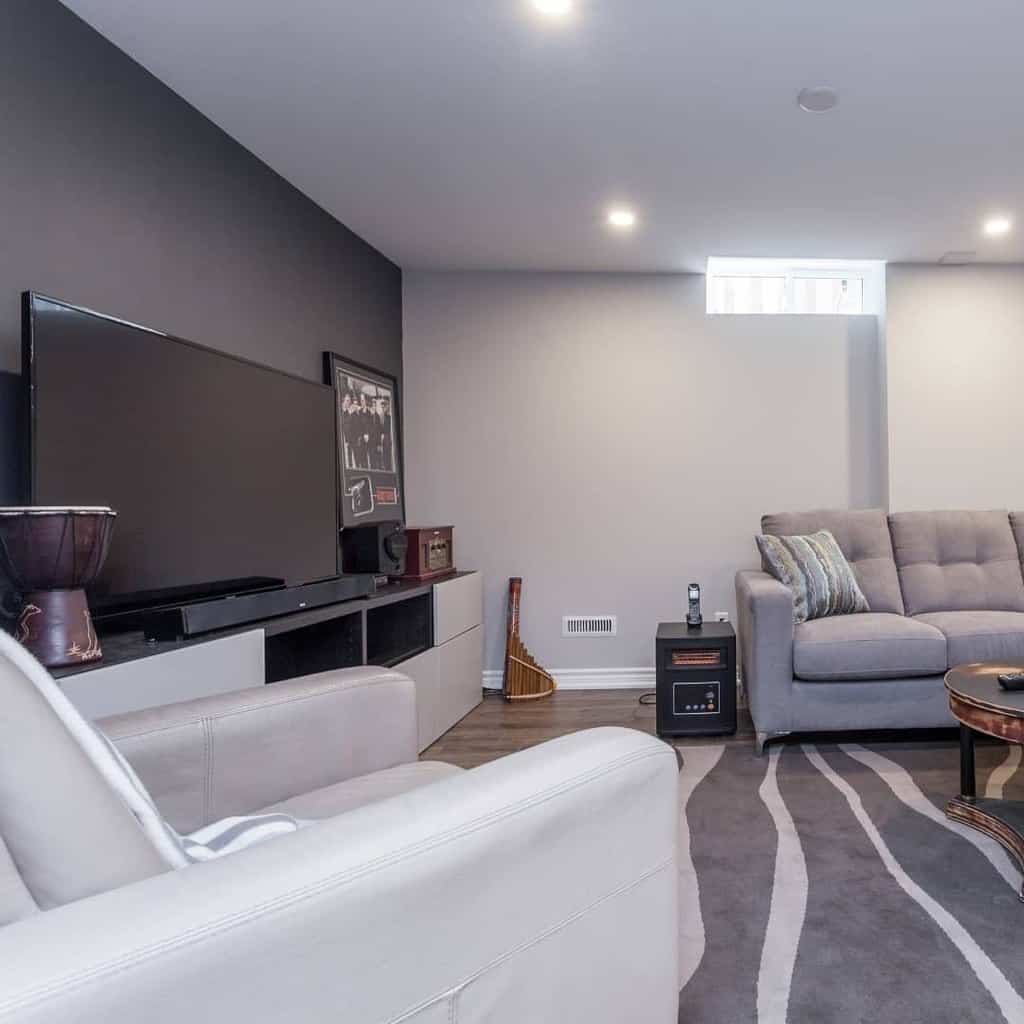
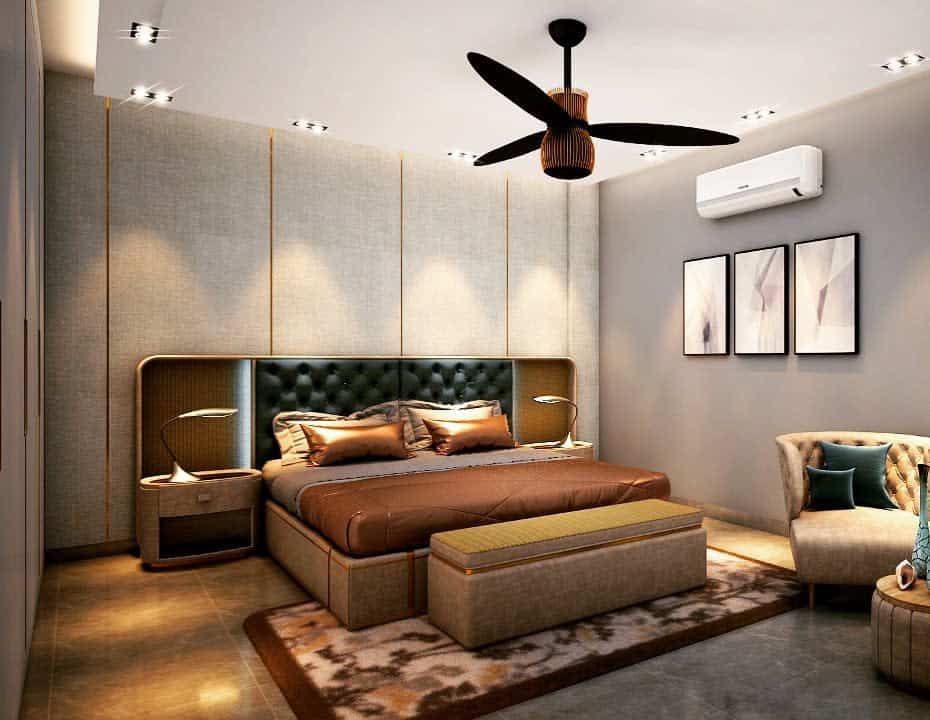
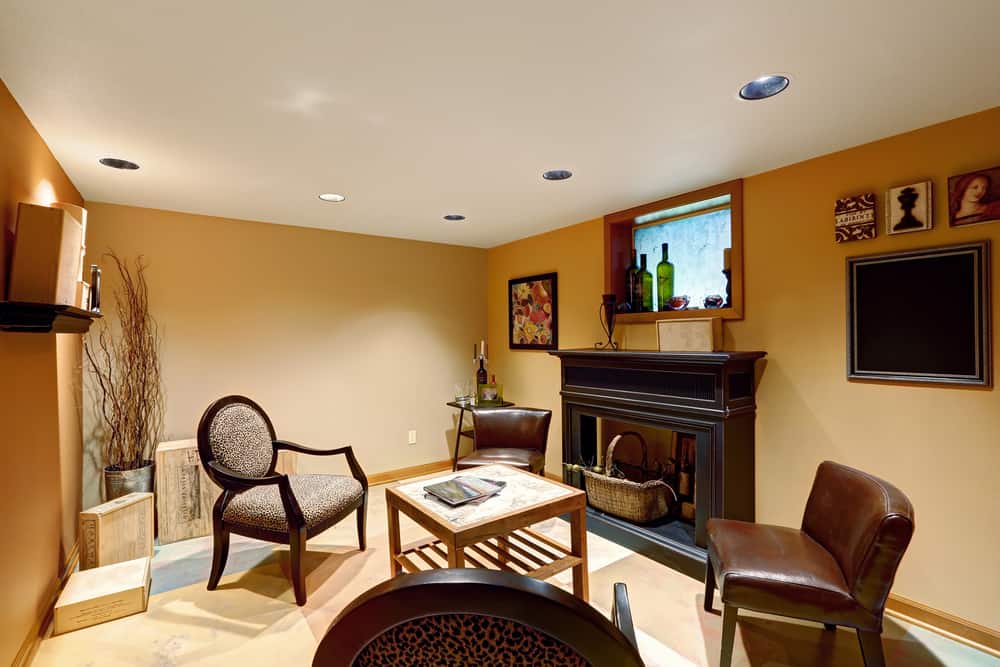
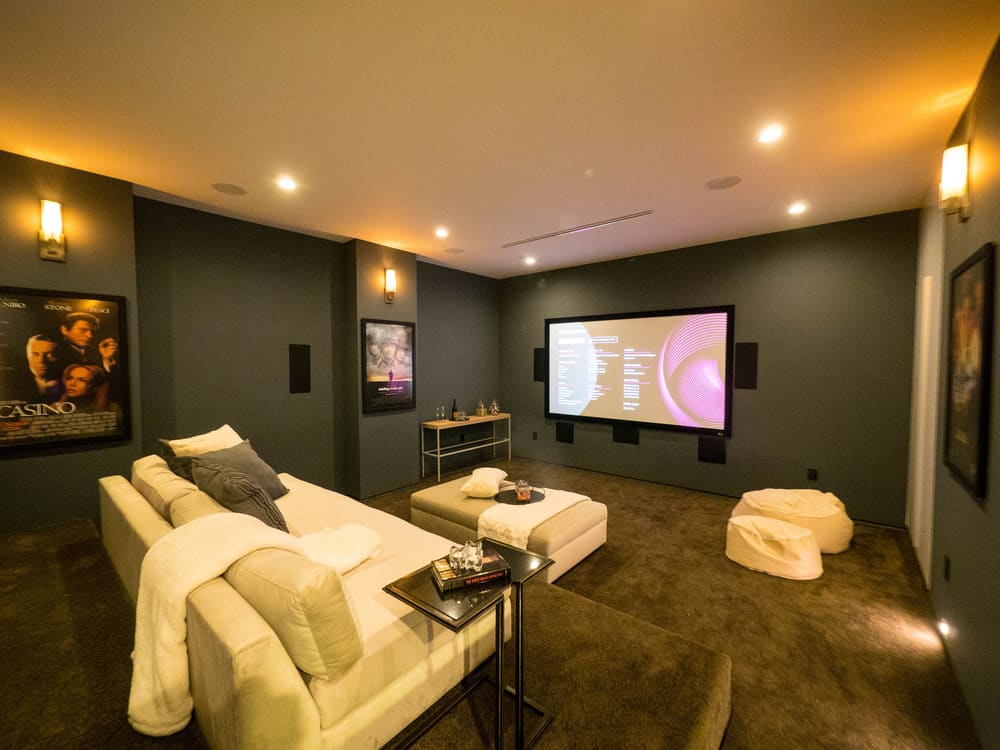
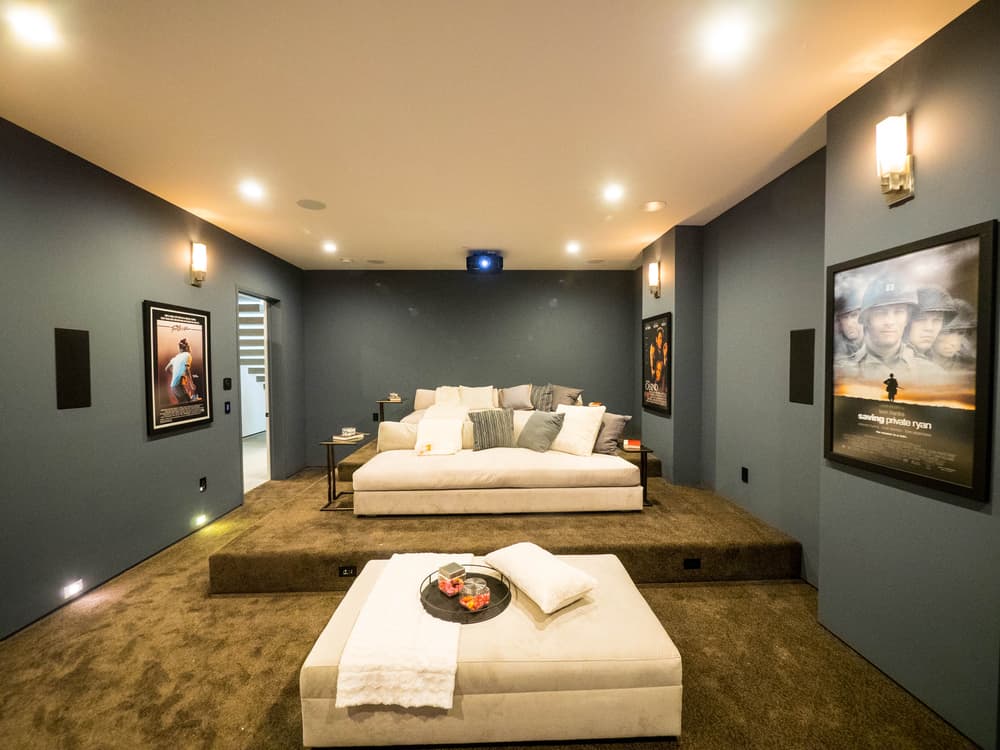
6. Add character
Changing the color of your basement walls can completely change the look and feel of the room. Choose three colors for your basement remodel.
Use the 10/30/60 method, where each number indicates the percentage used in the room. You will find this approach used in popular basement decorating ideas.
The color of your ceiling is more important in the basement than in other rooms in your home. A bright white can reflect light and make the room appear brighter.
Black can cause the basement ceiling to recede and appear higher than it actually is. No matter what color you choose, paint everything from the HVAC system to the ceiling beams. This creates a finished look.
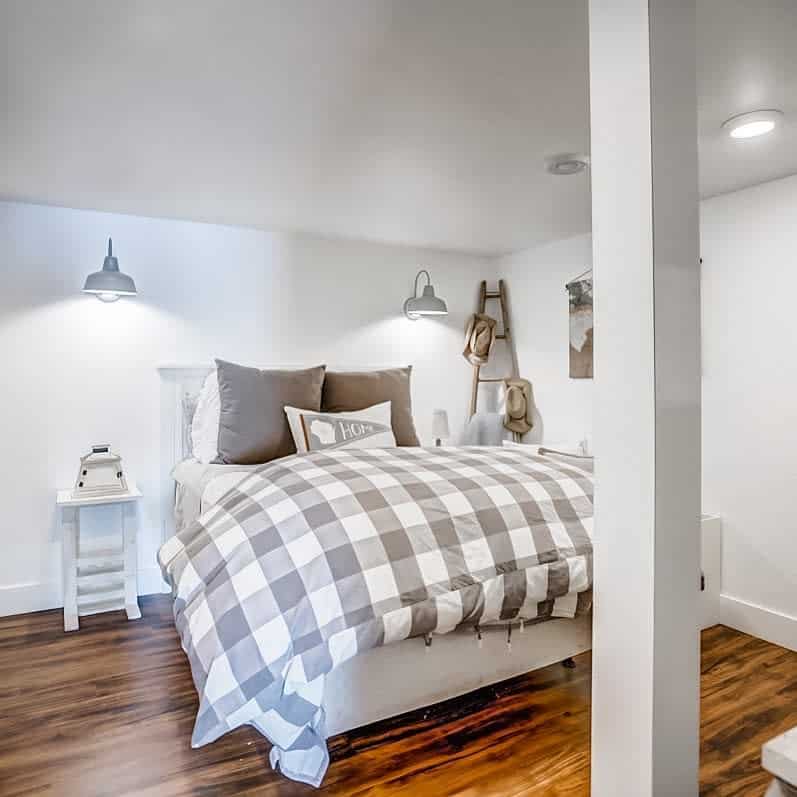
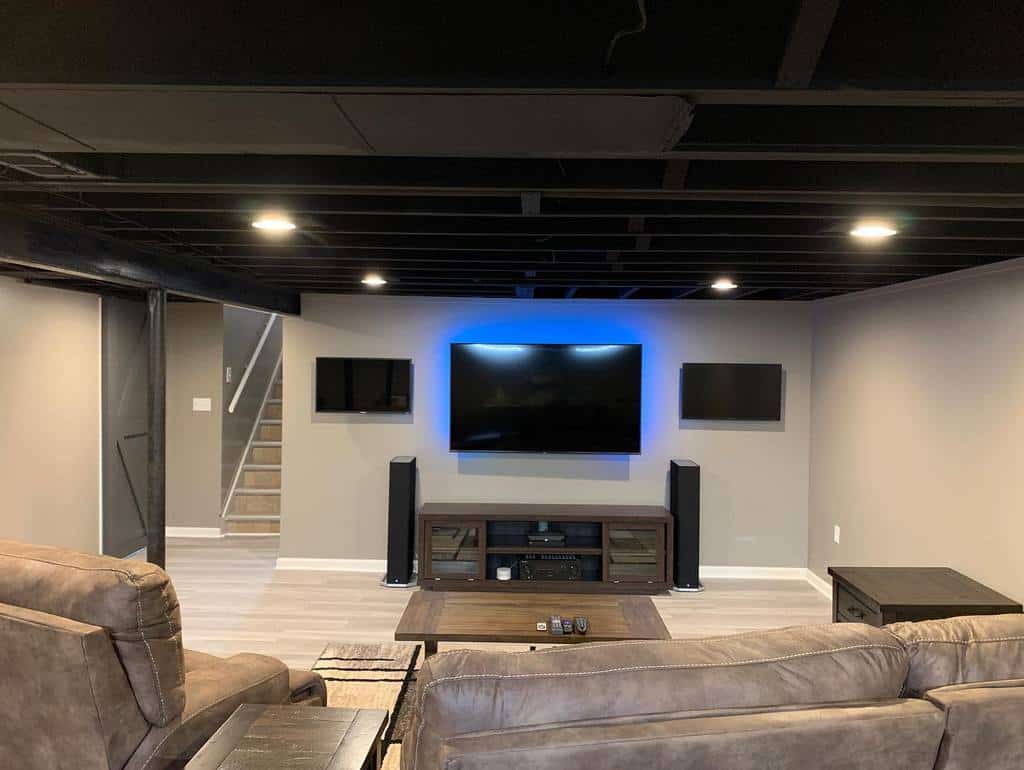
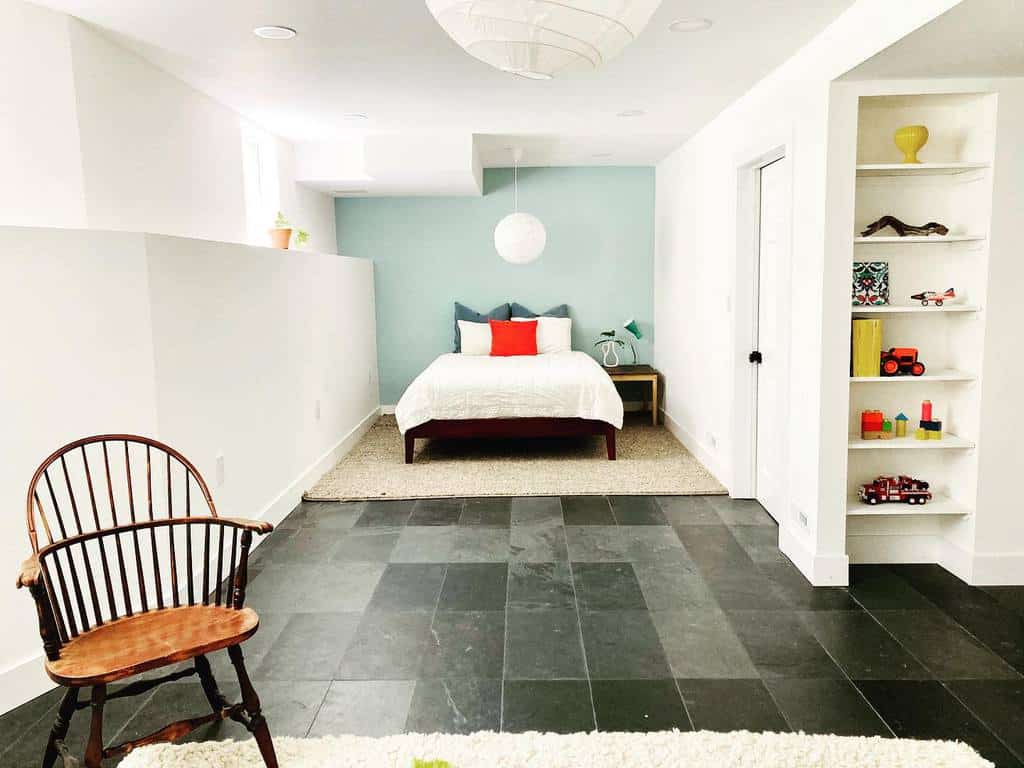
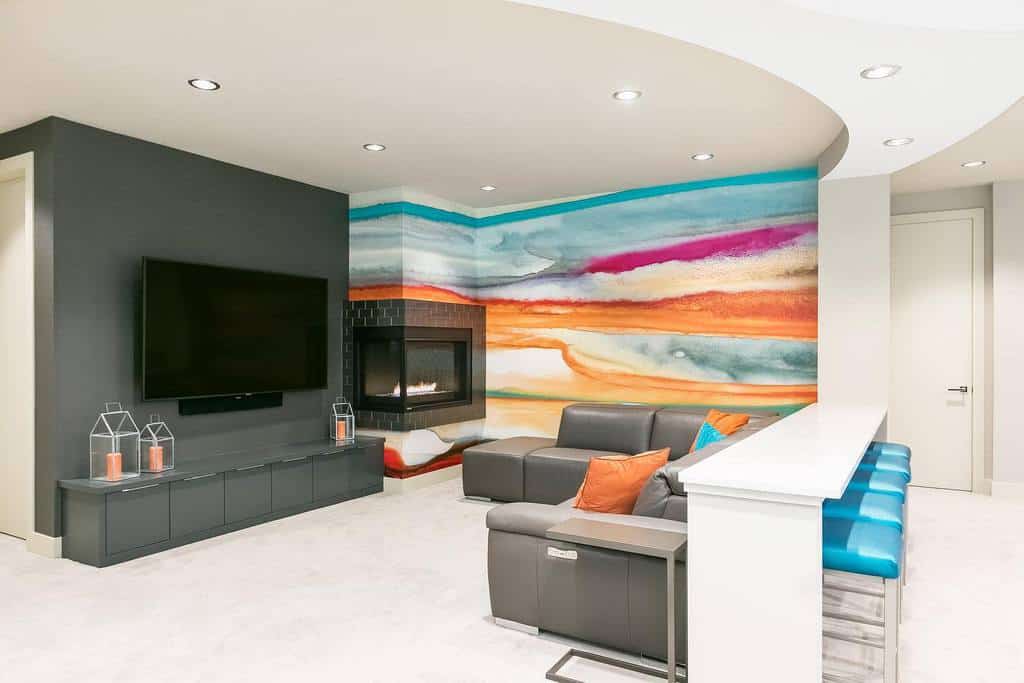
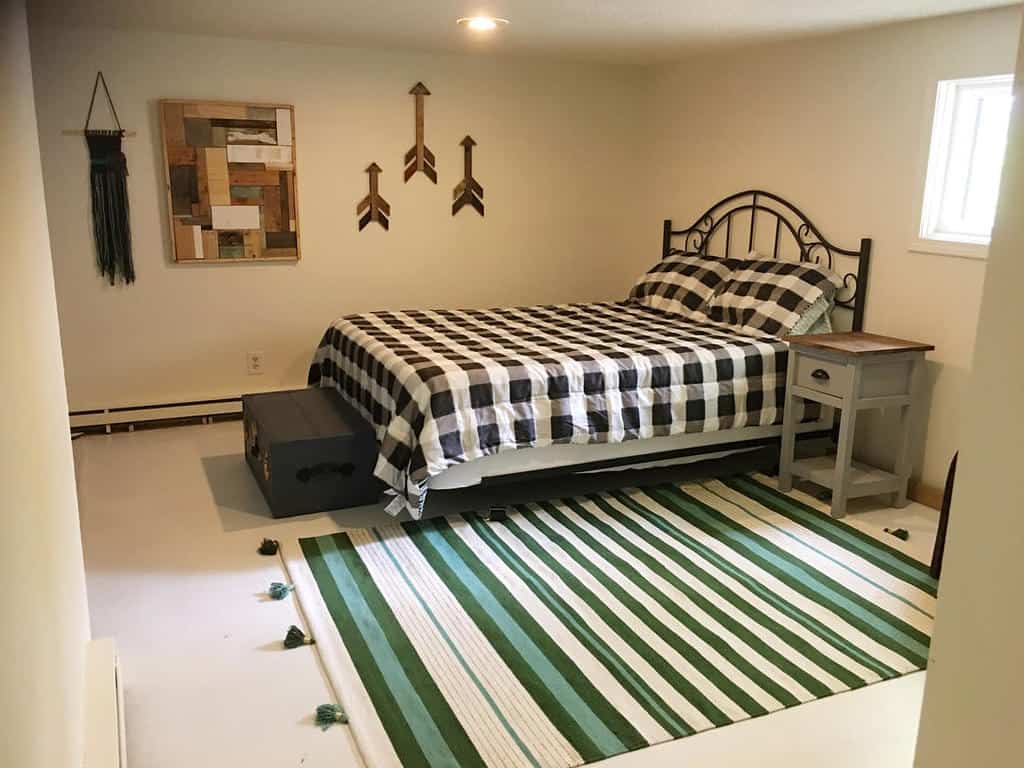
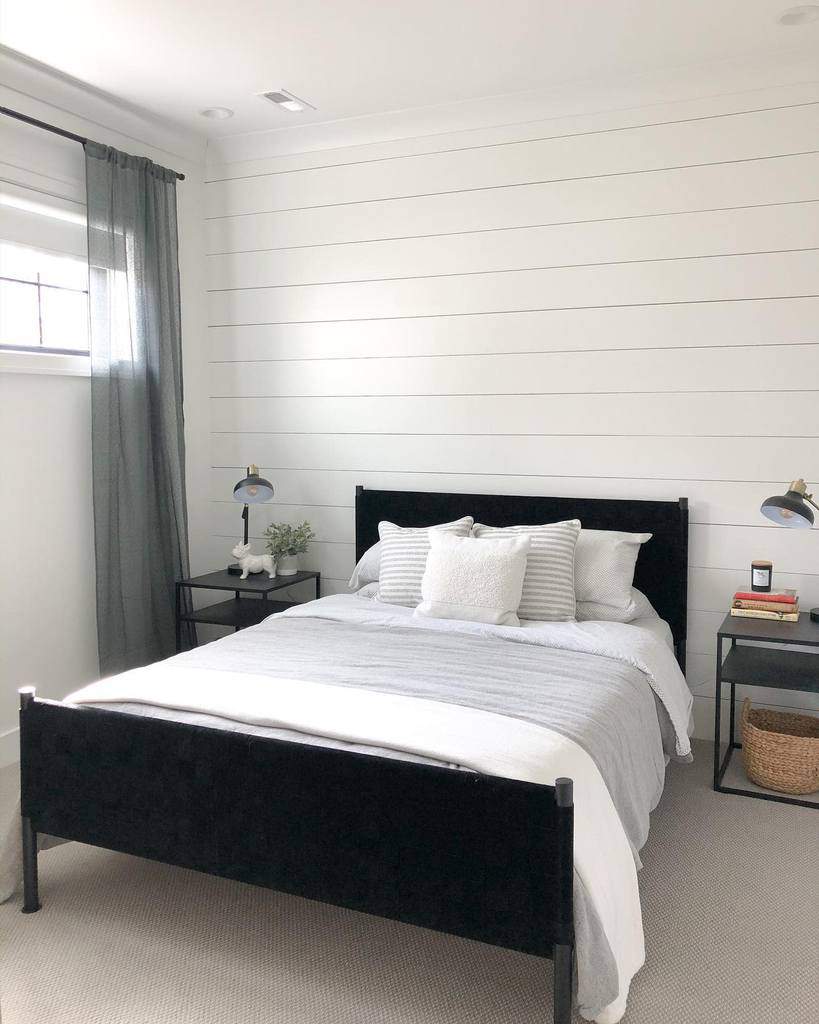
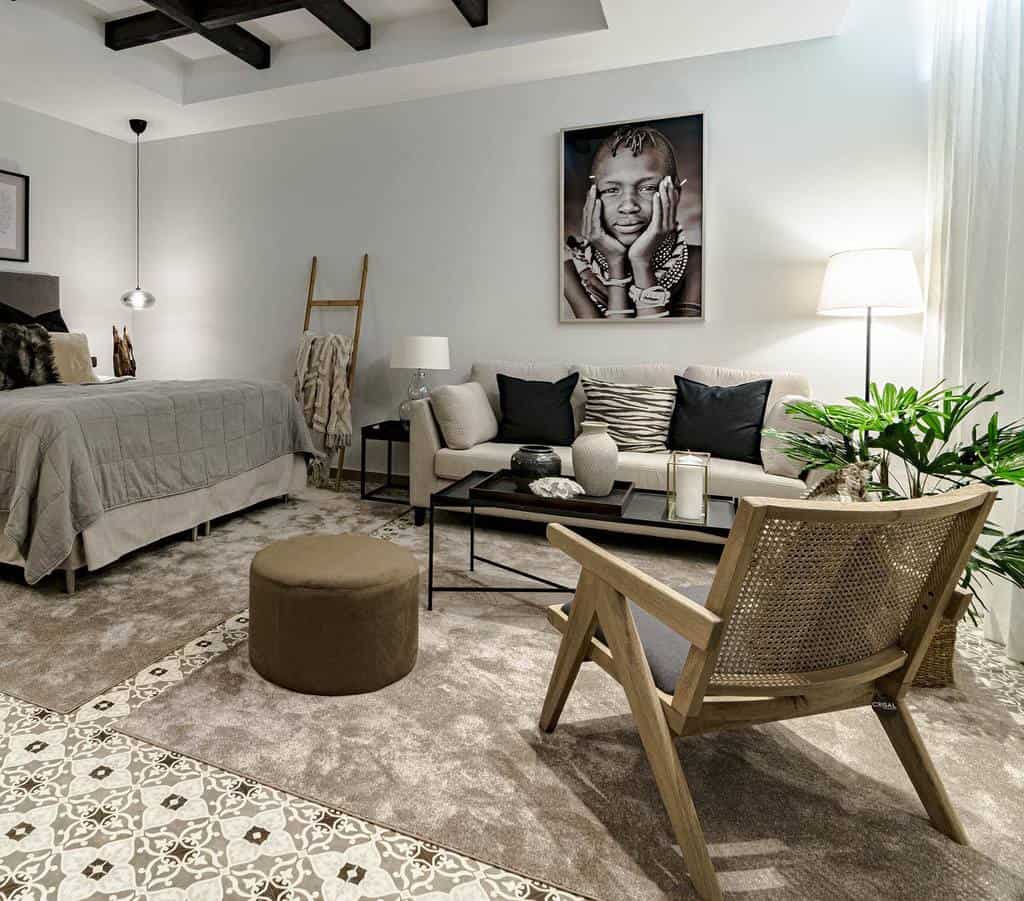
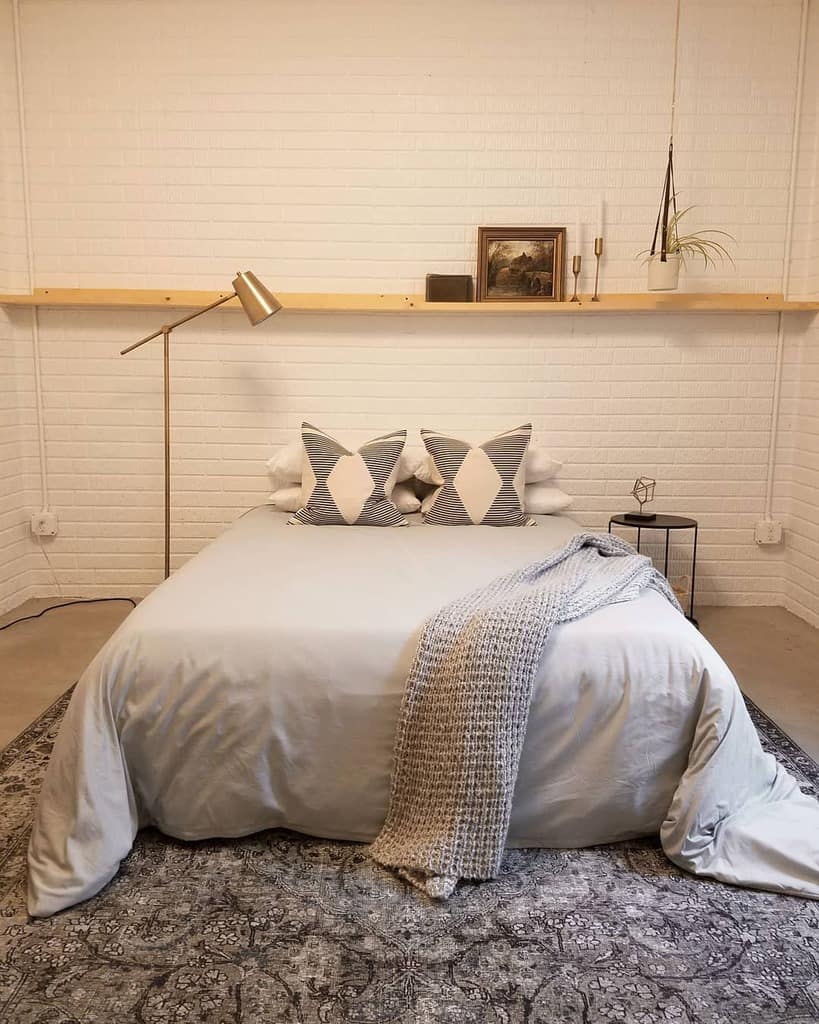
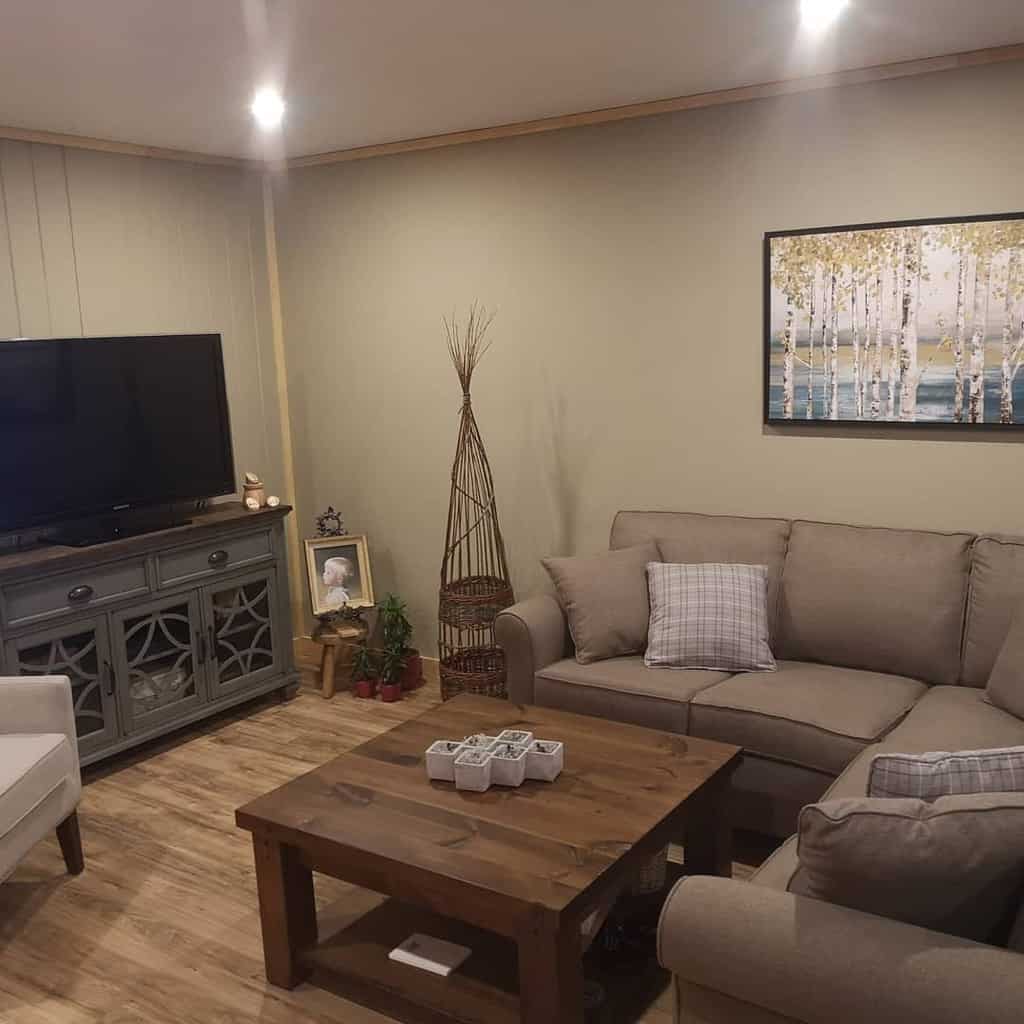
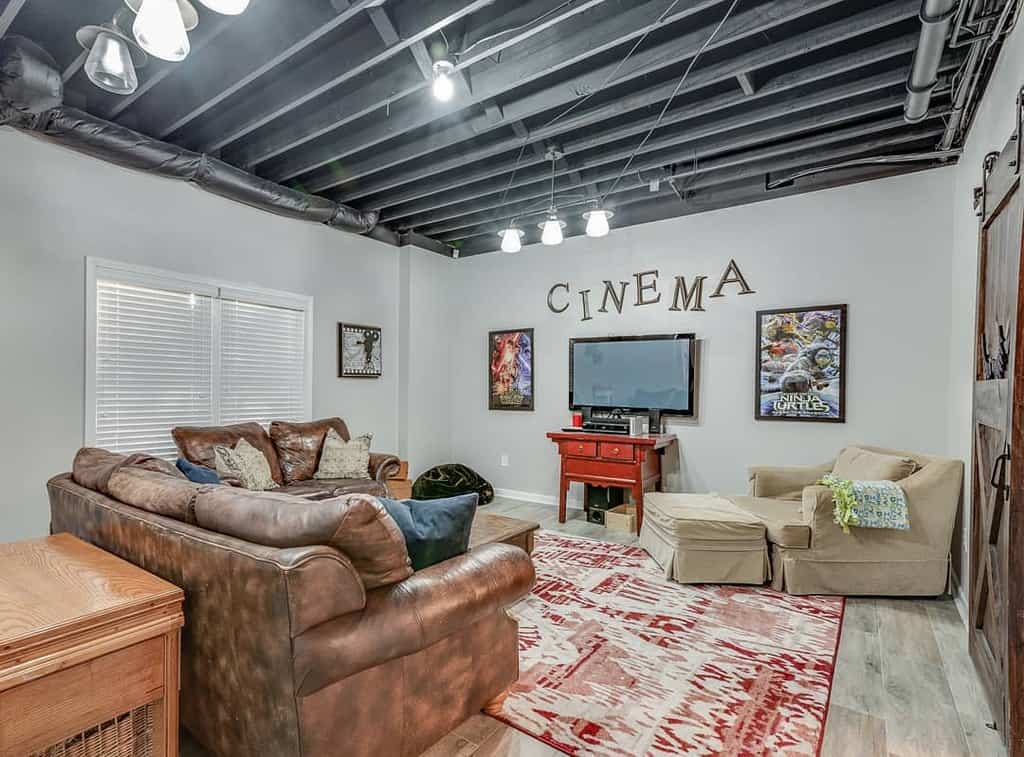
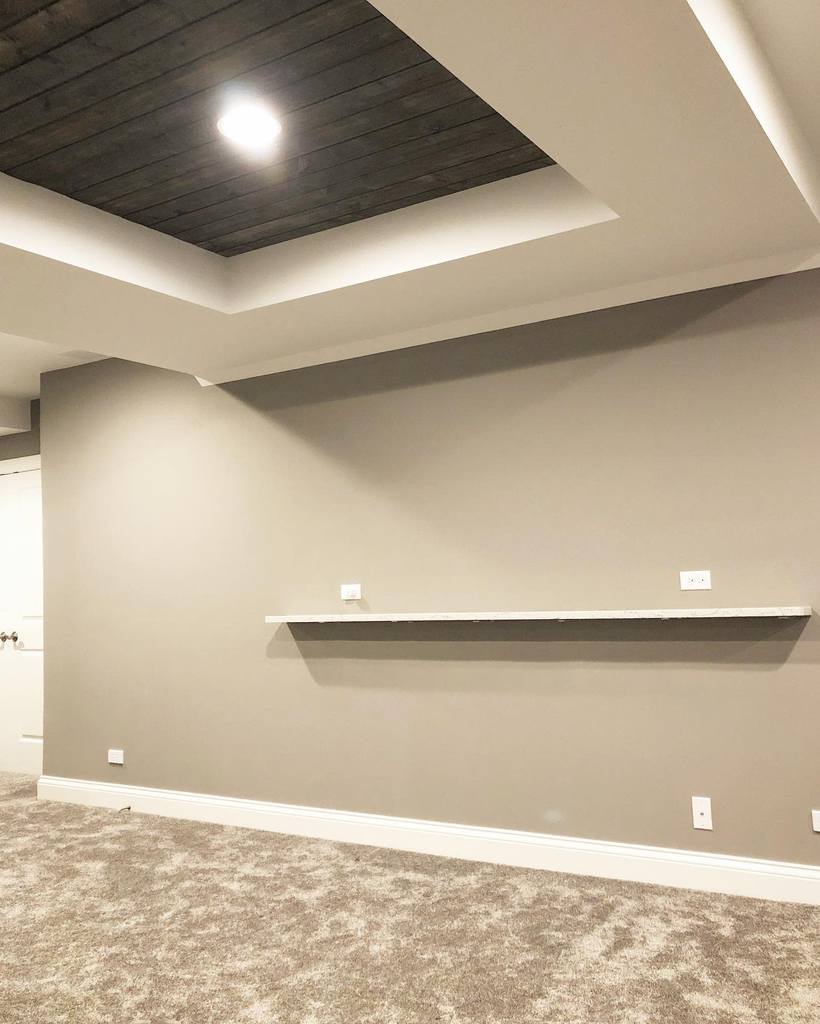
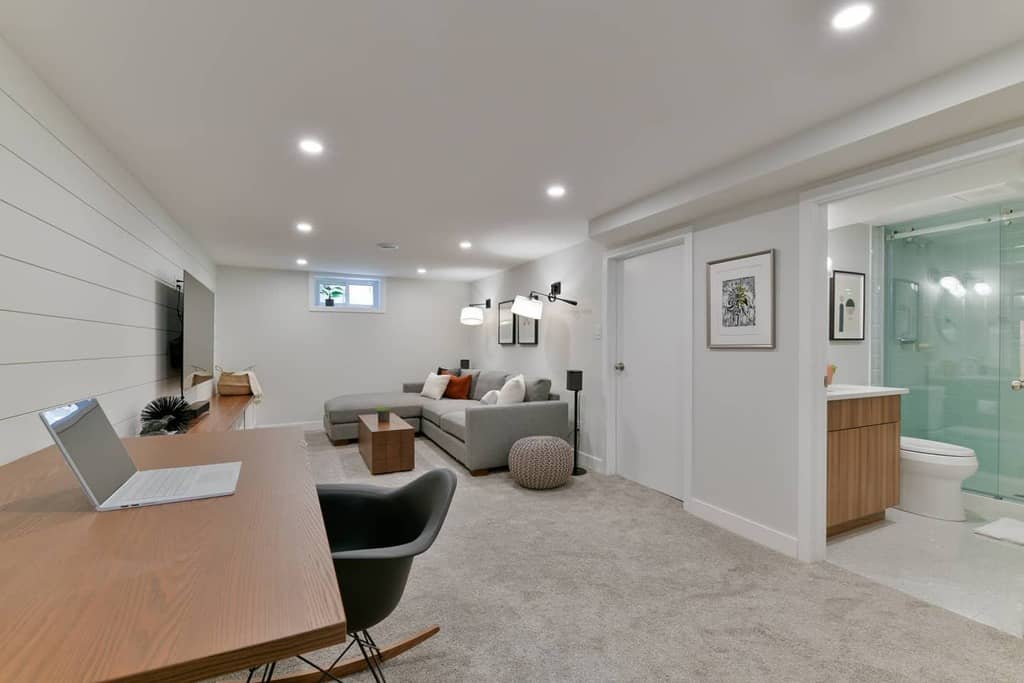
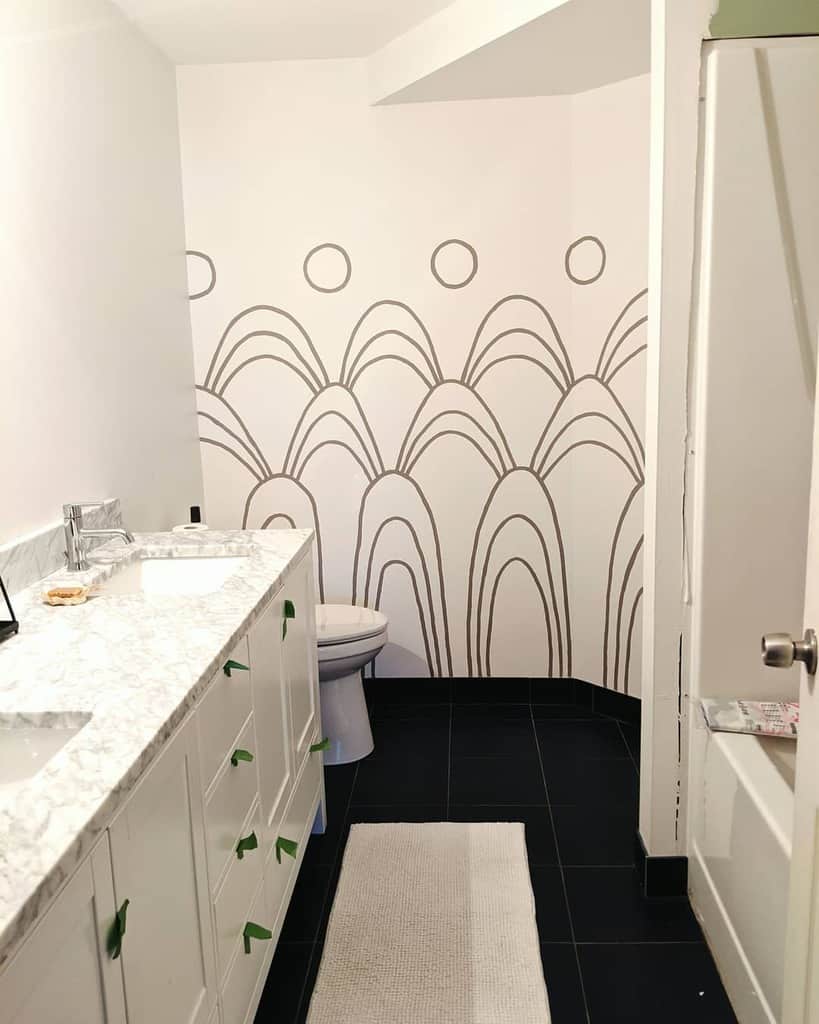
7. Cozy and welcoming
If you want to create a cozy space to feel good in, then think about rustic basement ideas. These ideas take a simple and somewhat modest approach to basement renovation.
You can achieve this look by adding wood paneling to the walls or installing wood laminate on the floors. Look for wood surfaces that are worn and have an aged finish.
If you have the budget, you can even find authentic reclaimed or reclaimed wood. This would add a feeling of authenticity to your basement. Choose leather or suede furniture to balance out the wood.
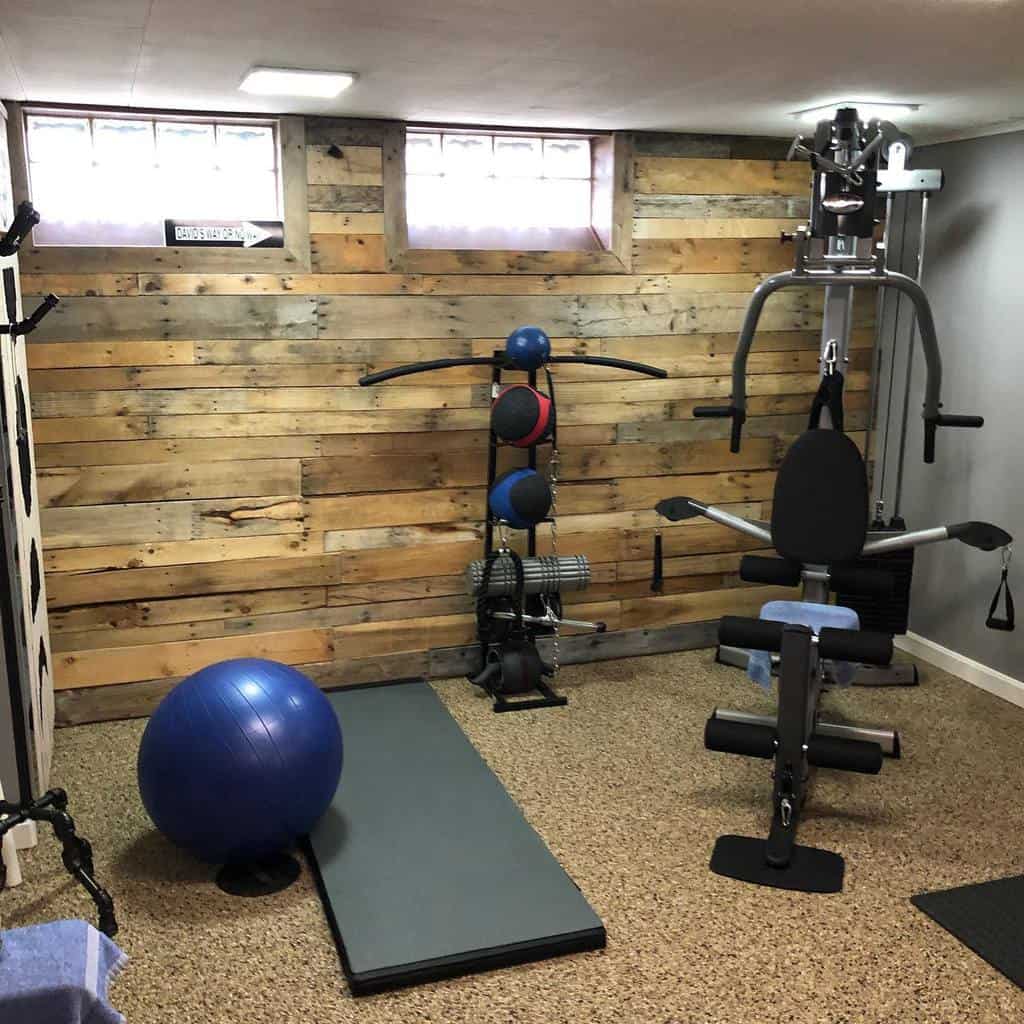
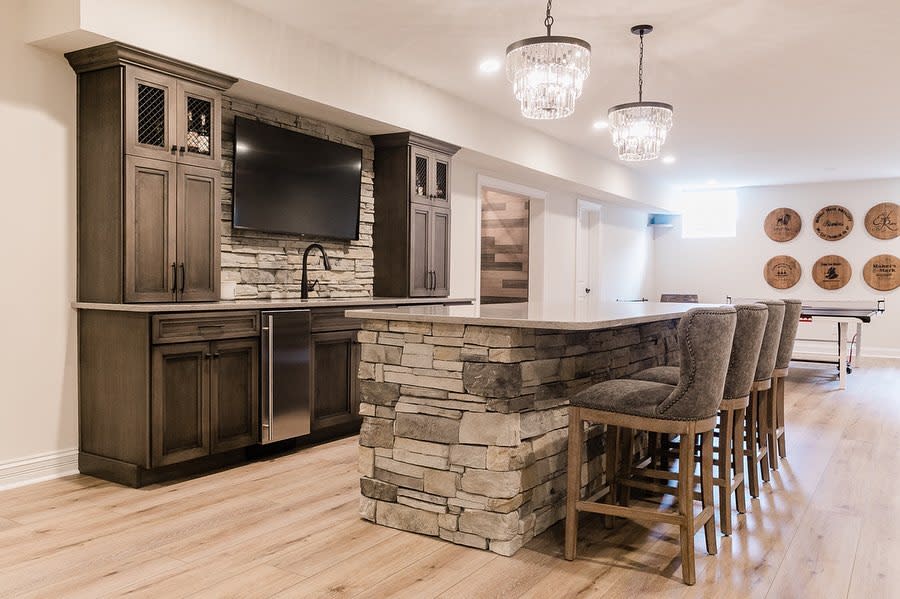
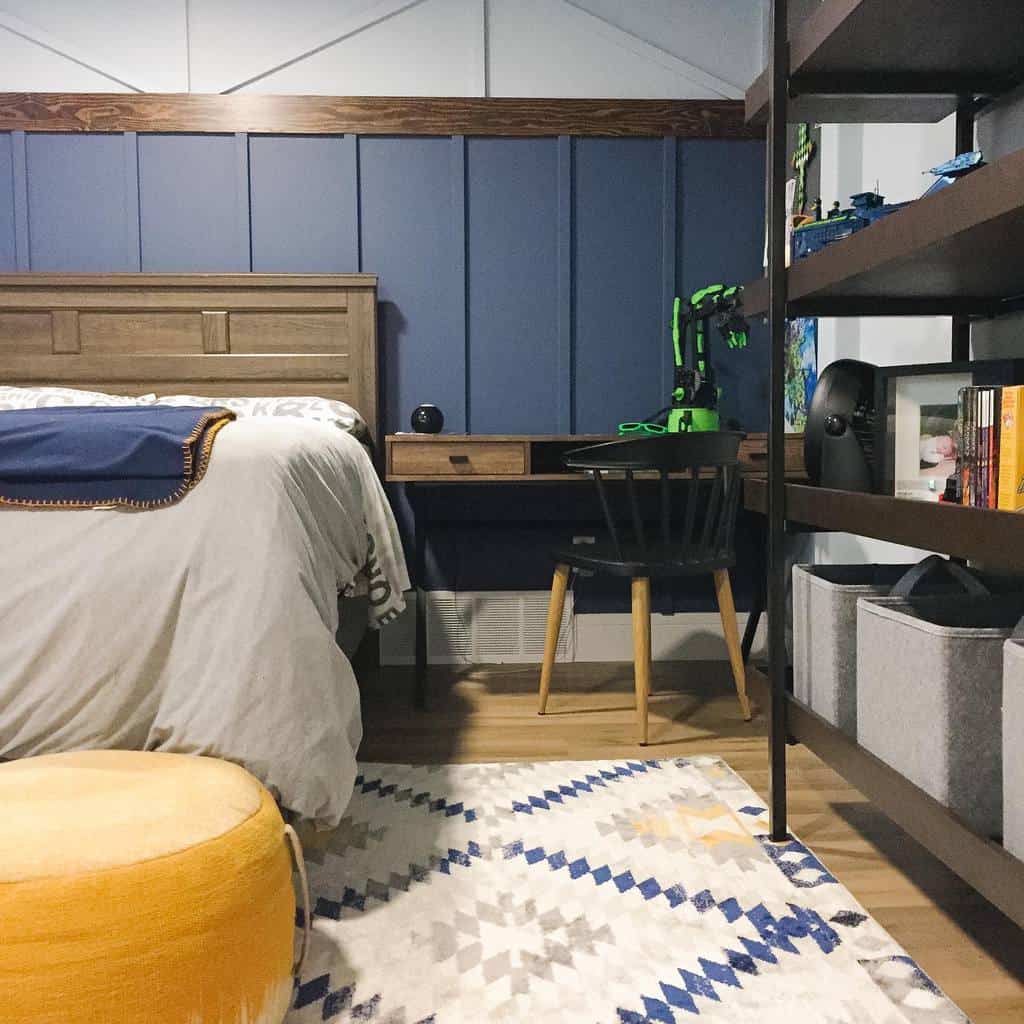
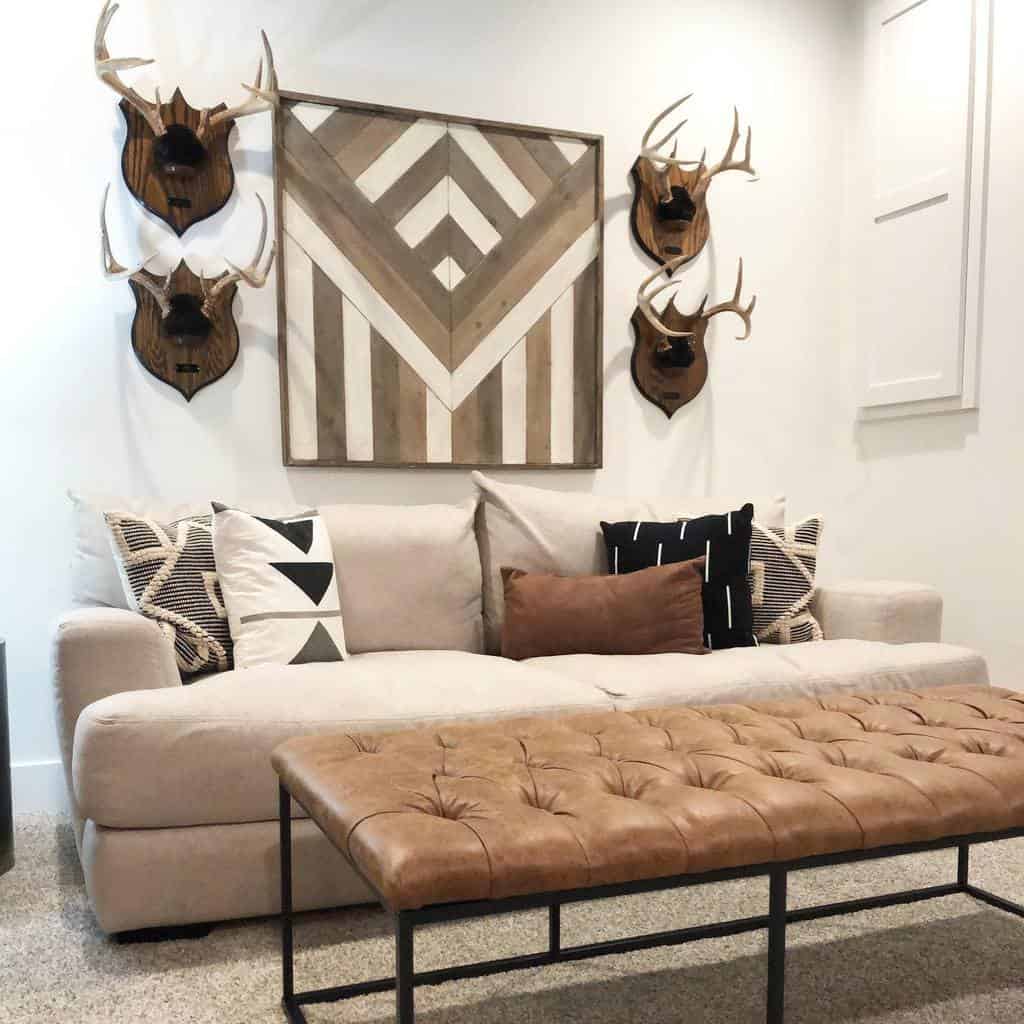
8. Timeless charm
If you don’t want to commit to the completely rustic look, the overlap is a great compromise. It is perfect for creating an accent wall in your basement space.
White stair moldings on the walls make a small basement feel brighter and brighter. Combine it with a warm wooden basement floor so that the room does not appear bare and cold.
You can continue this look throughout the entire basement. Create a contrasting look on the basement stairs. The front of the stairs can mimic the shiplap look with a white wooden front. The top of the stairs can be made of warm wood.
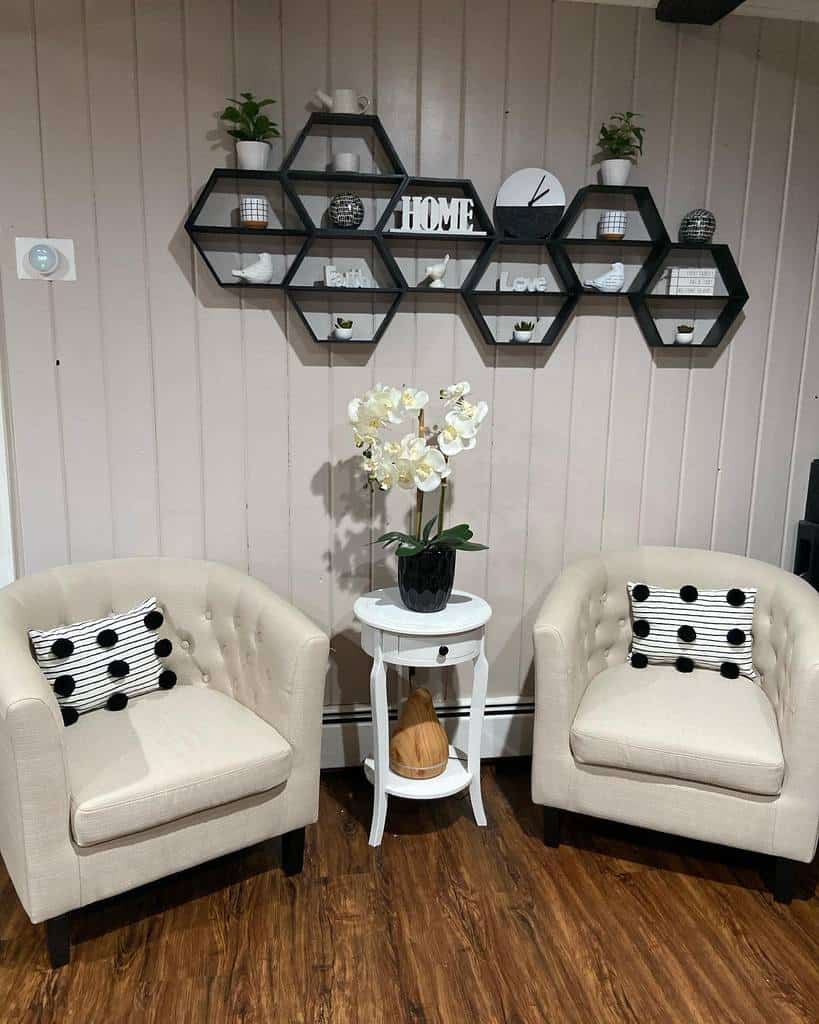
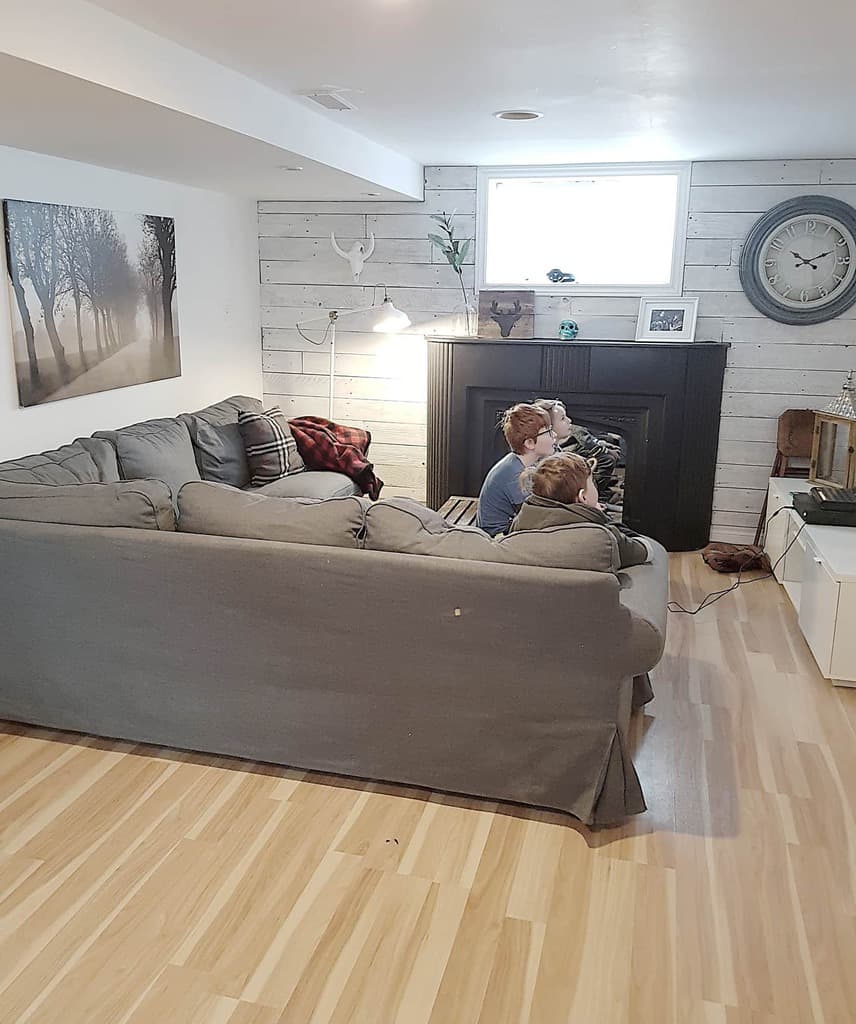
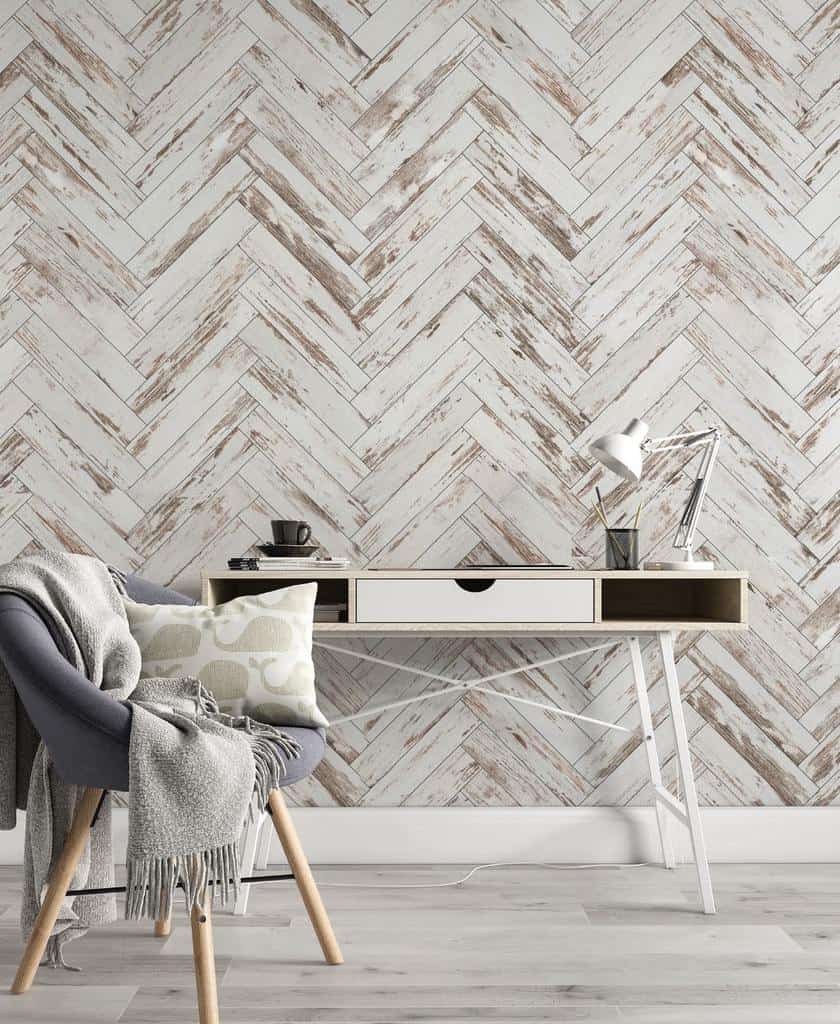
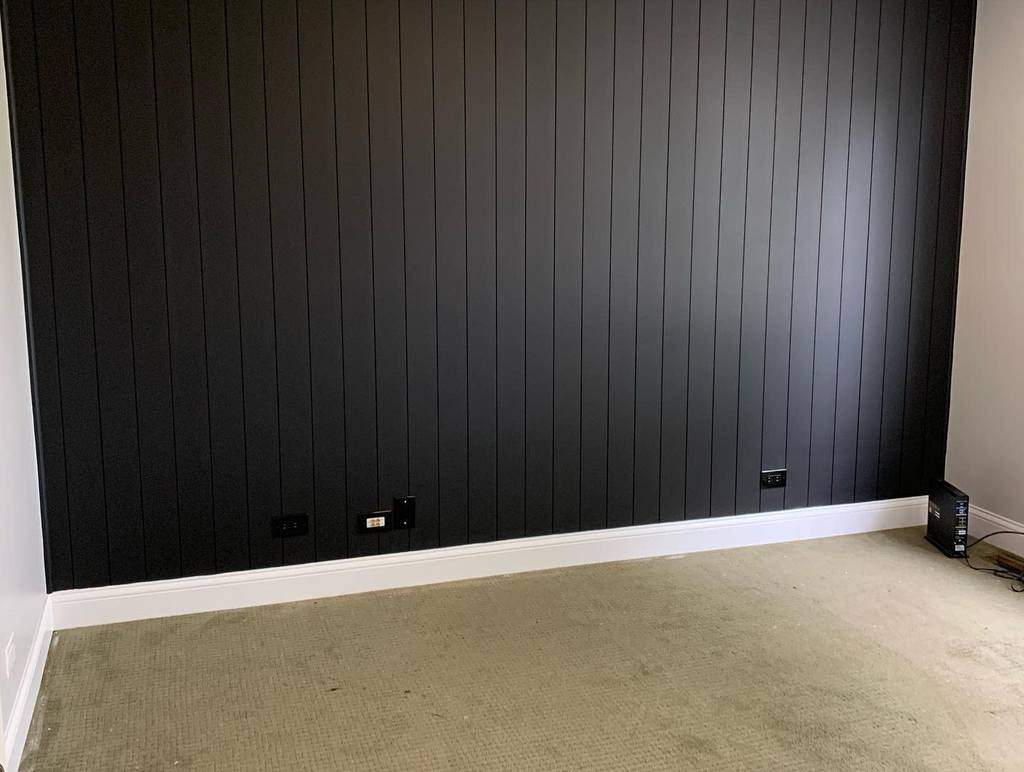
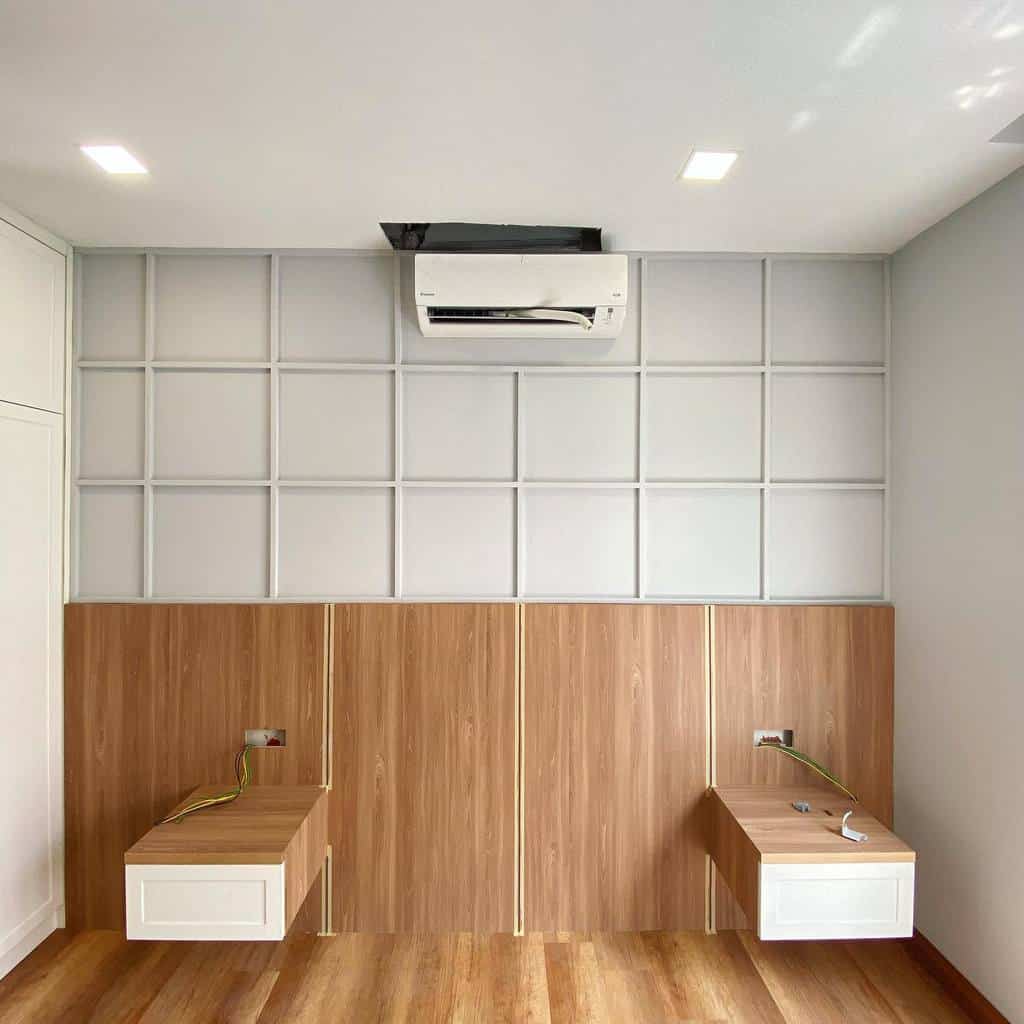
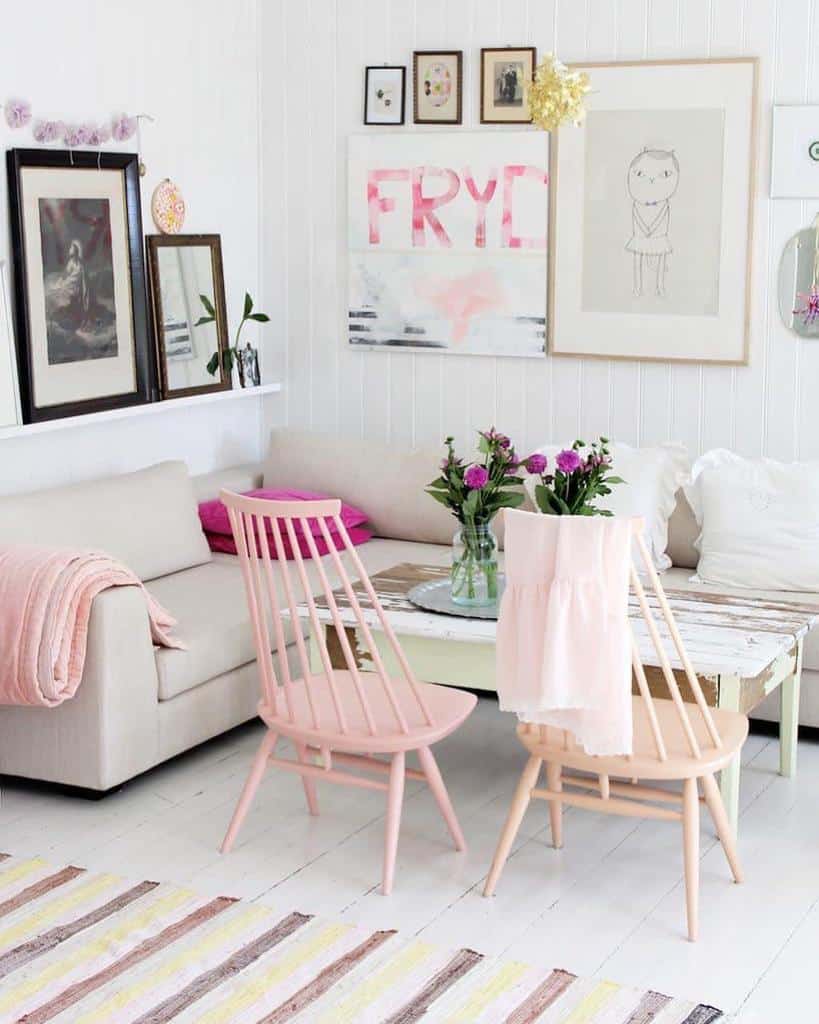
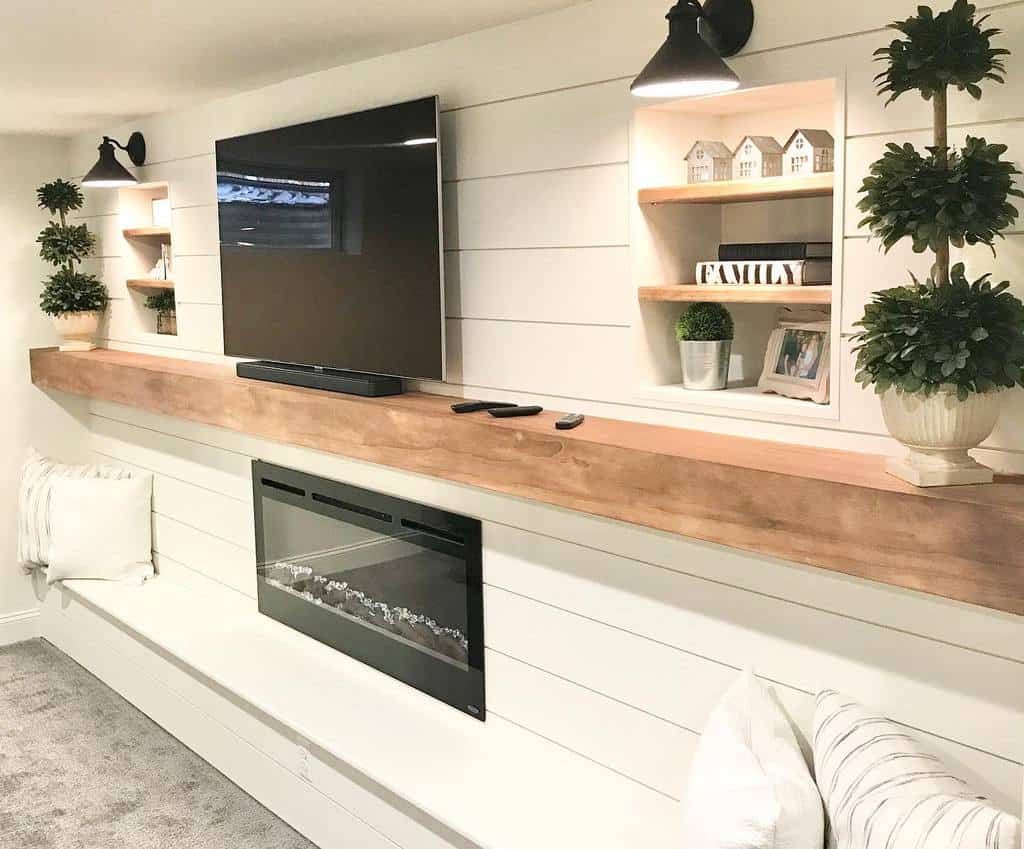
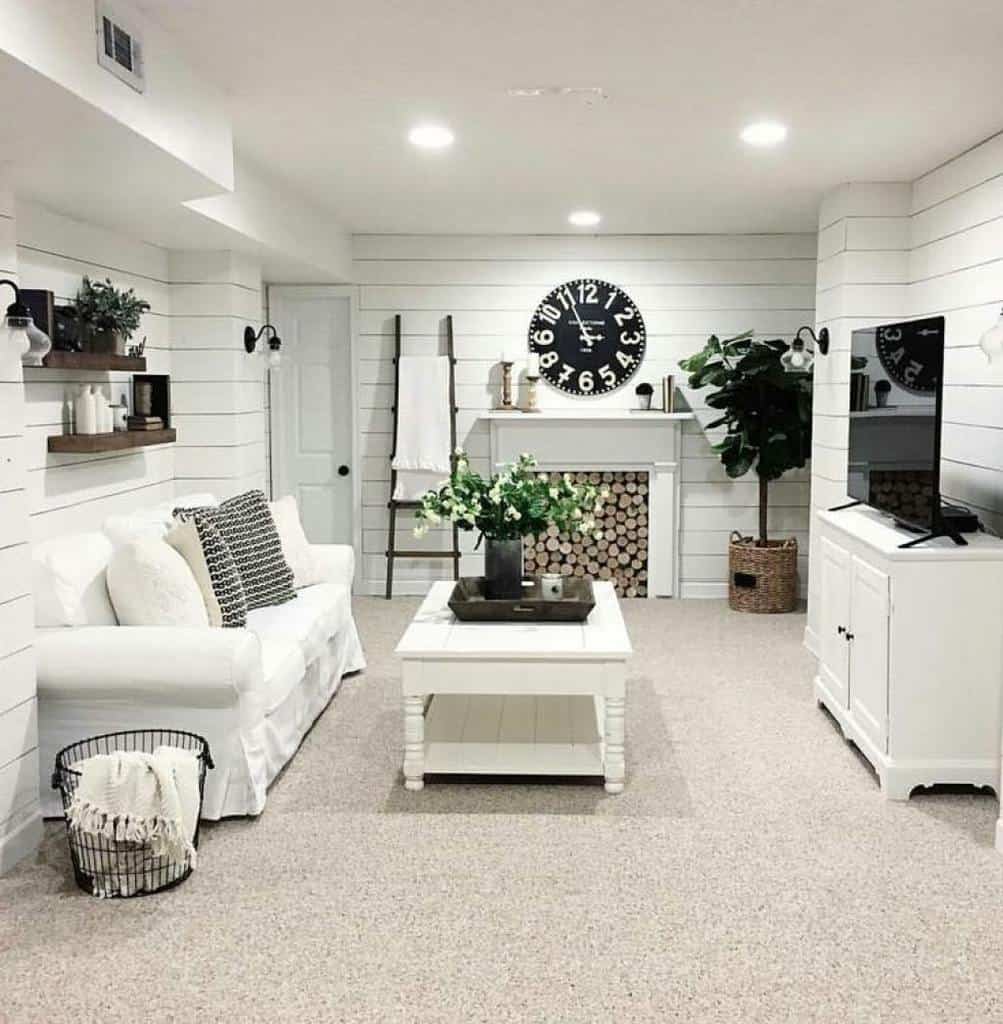
9. Natural beauty
Unlike cinder blocks, stone can create a cave-like feel in a good way. It is the perfect wall covering to transform your basement into a wine cellar. For this look, use a large wood and stone design. You can do this with wallpaper, wall panels, or even real stone. Which method you choose depends on your budget.
Stacked stone is a modern look that can add structure to your basement. It is perfect for finishing the walls of your basement. Create an accent wall. Cover the front of your basement bar. Build a half wall that divides the room into separate useful areas.
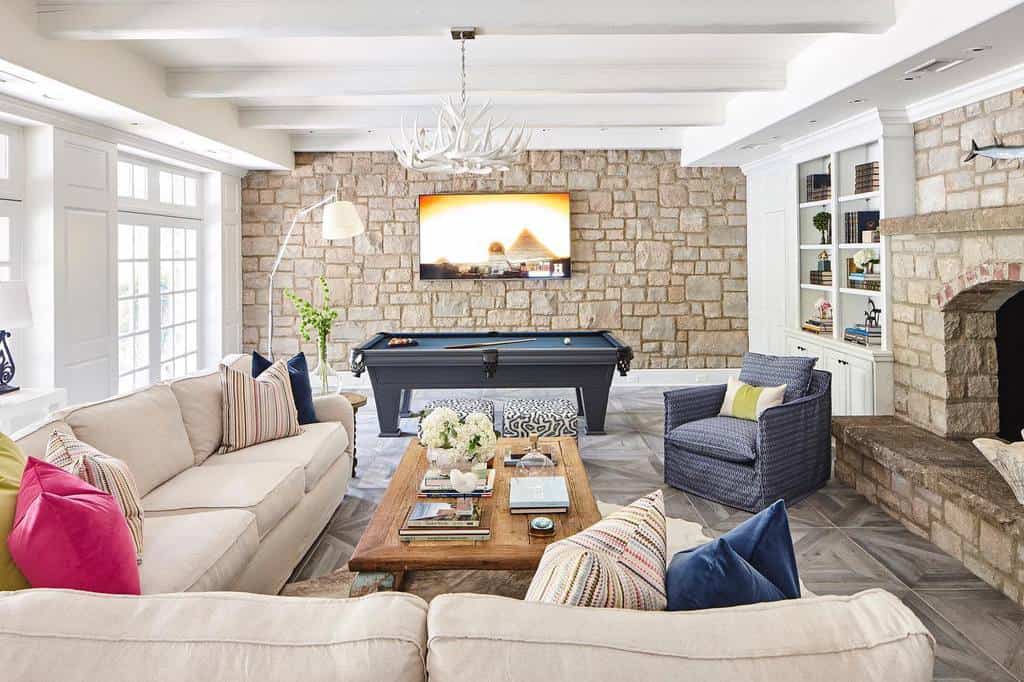
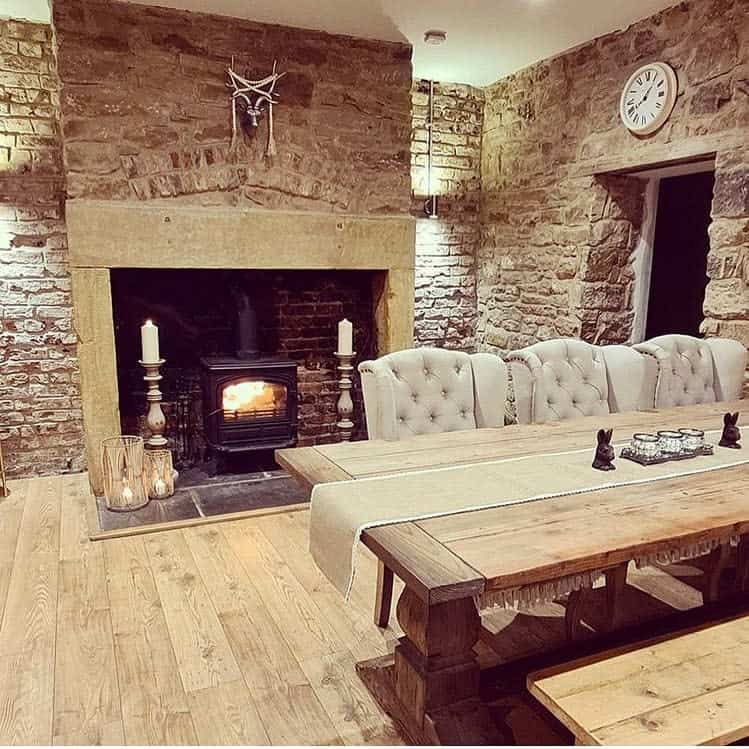
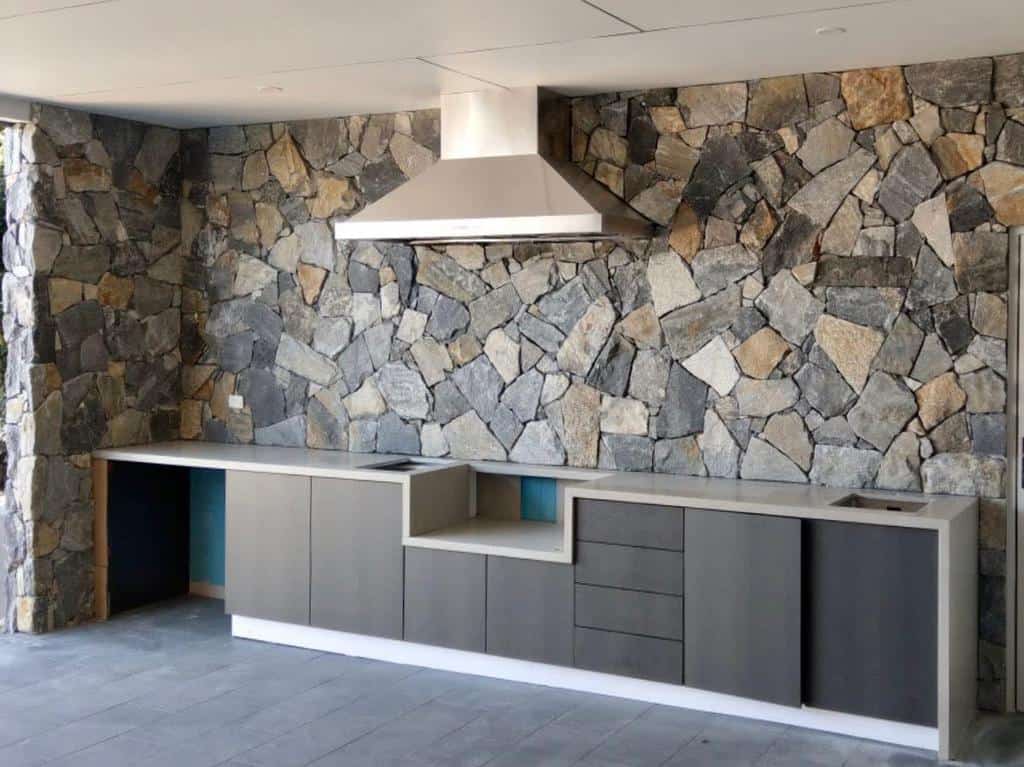
10. Stunning wallpaper designs
Completely change the look of your basement with wallpaper. People usually don’t consider wallpaper because basements are damp and wallpaper is incompatible with moisture. However, once you’ve finished your basement, using modern wallpaper shouldn’t be a problem.
Stick the wallpaper on the drywall or other surfaces. You could have a design in each area to define the different spaces. Use a simple design in the main living space. Then something with a bolder pattern on the mini kitchen wall.
You could opt for statement wallpaper with a bright and bold pattern in the basement bathroom. The small space can support a stronger pattern that would look overwhelming on larger walls.
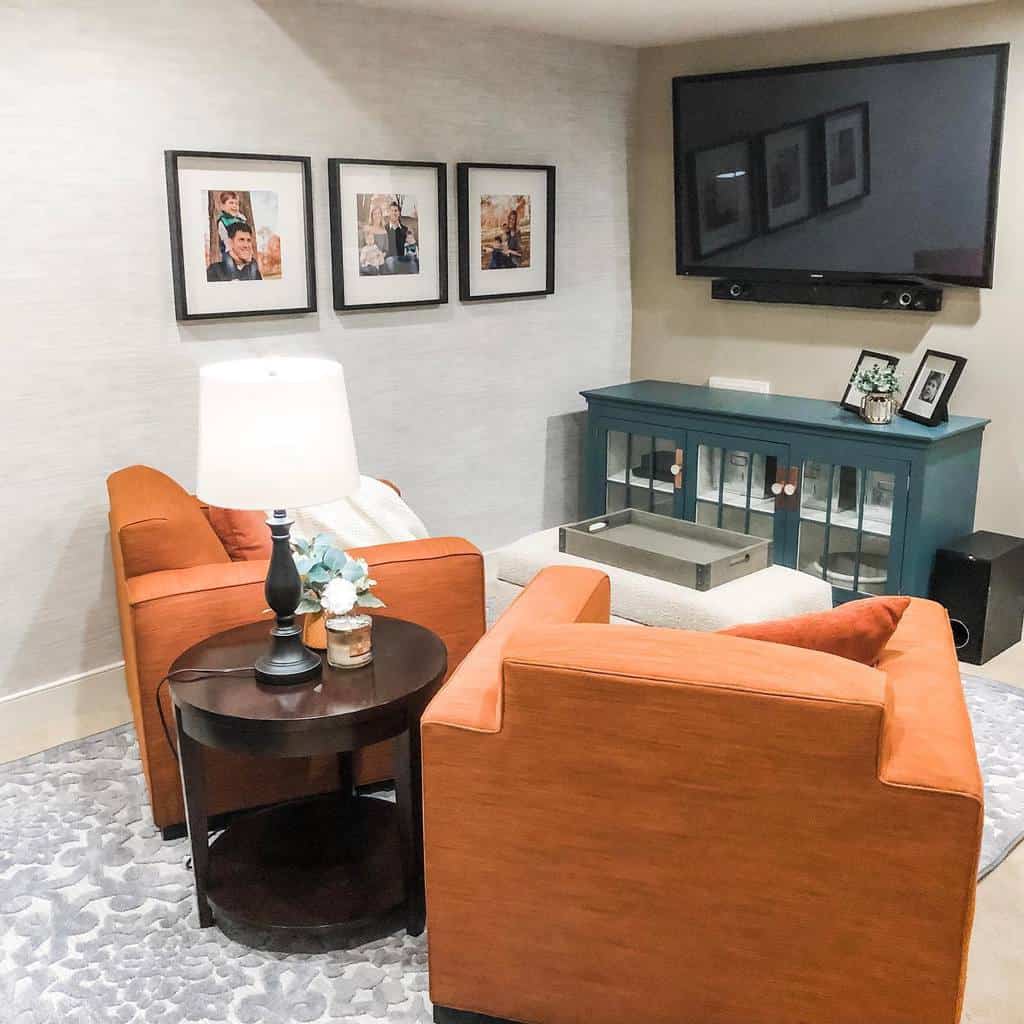
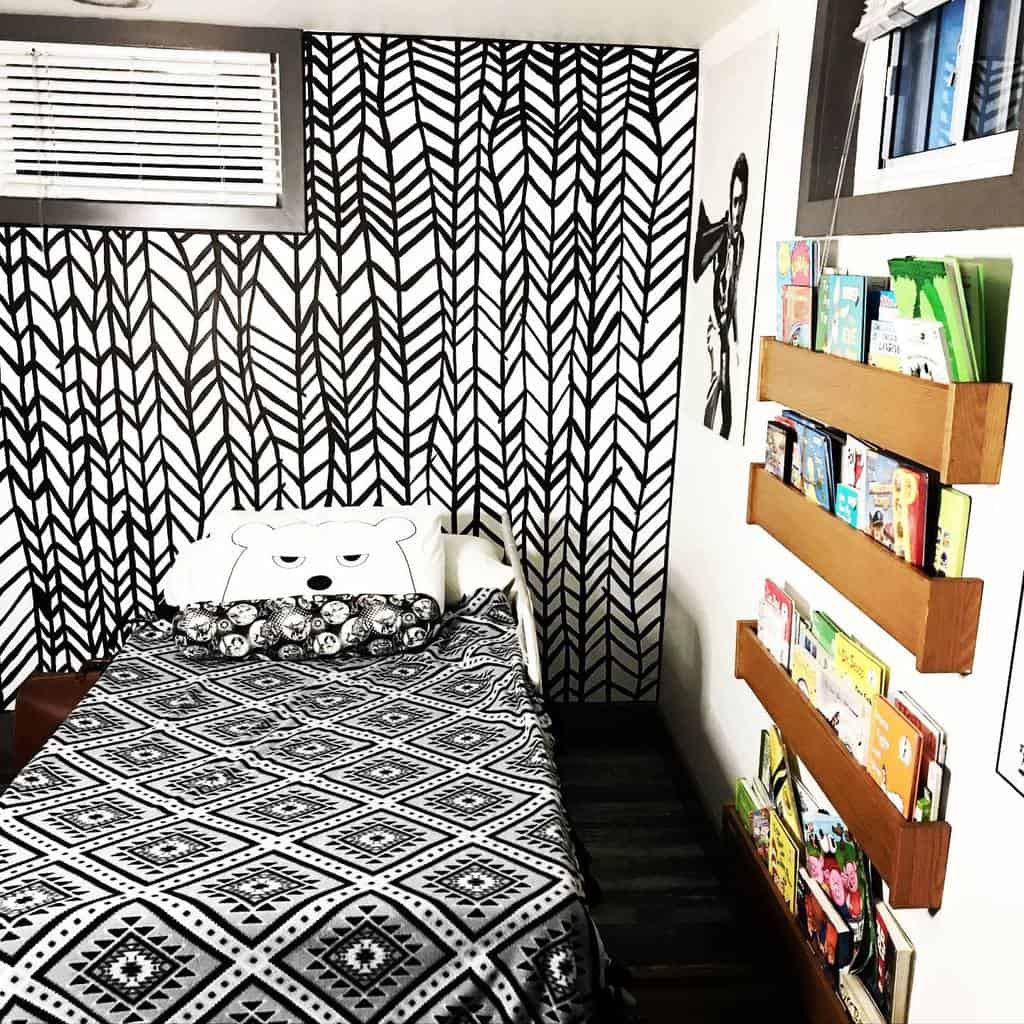
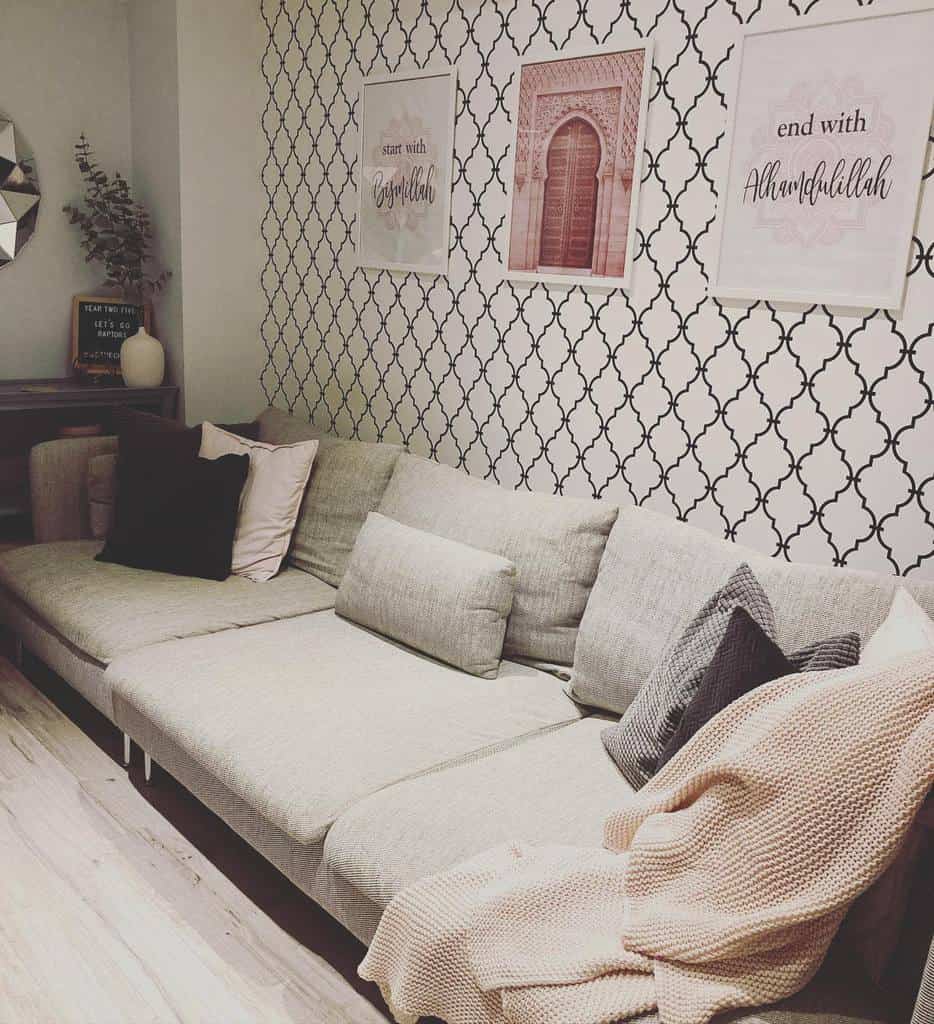
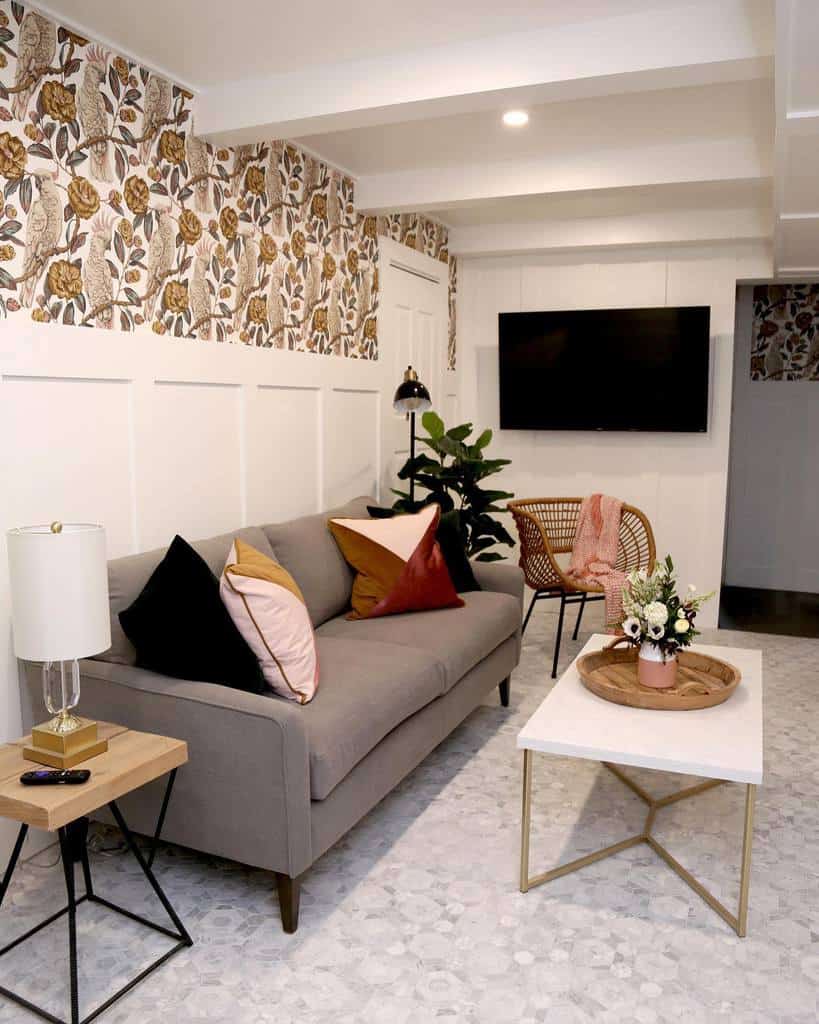
11. Warm and inviting
By adding wood paneling to your basement walls, you will create a warm and inviting atmosphere. You can do this by attaching wooden boards to the walls. However, this requires more work as you have to finish the wood and assemble each piece individually.
An easier solution is to purchase prefabricated wooden panels. You can buy them by the square meter so you get exactly what you need. The panels are then slotted together and glued or nailed to the wall. This is an inexpensive and easy DIY solution for a finished basement wall.
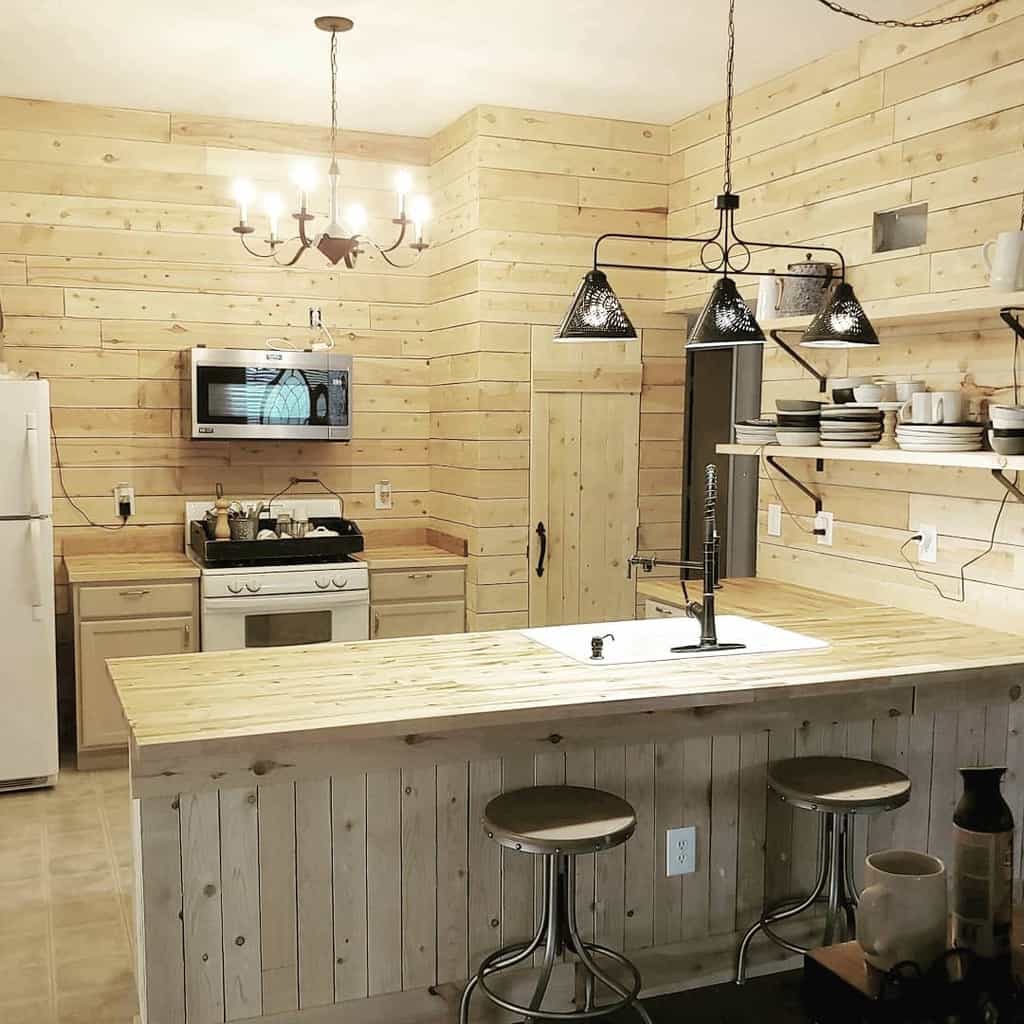
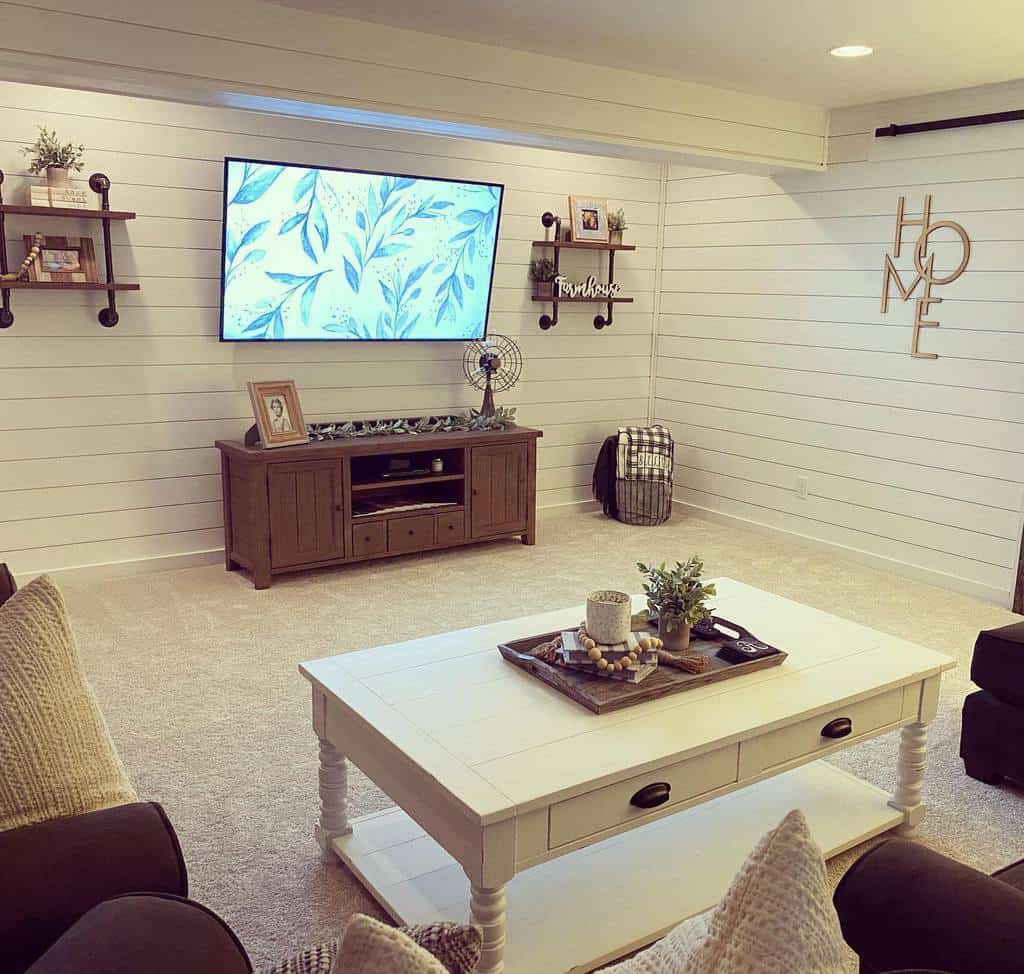
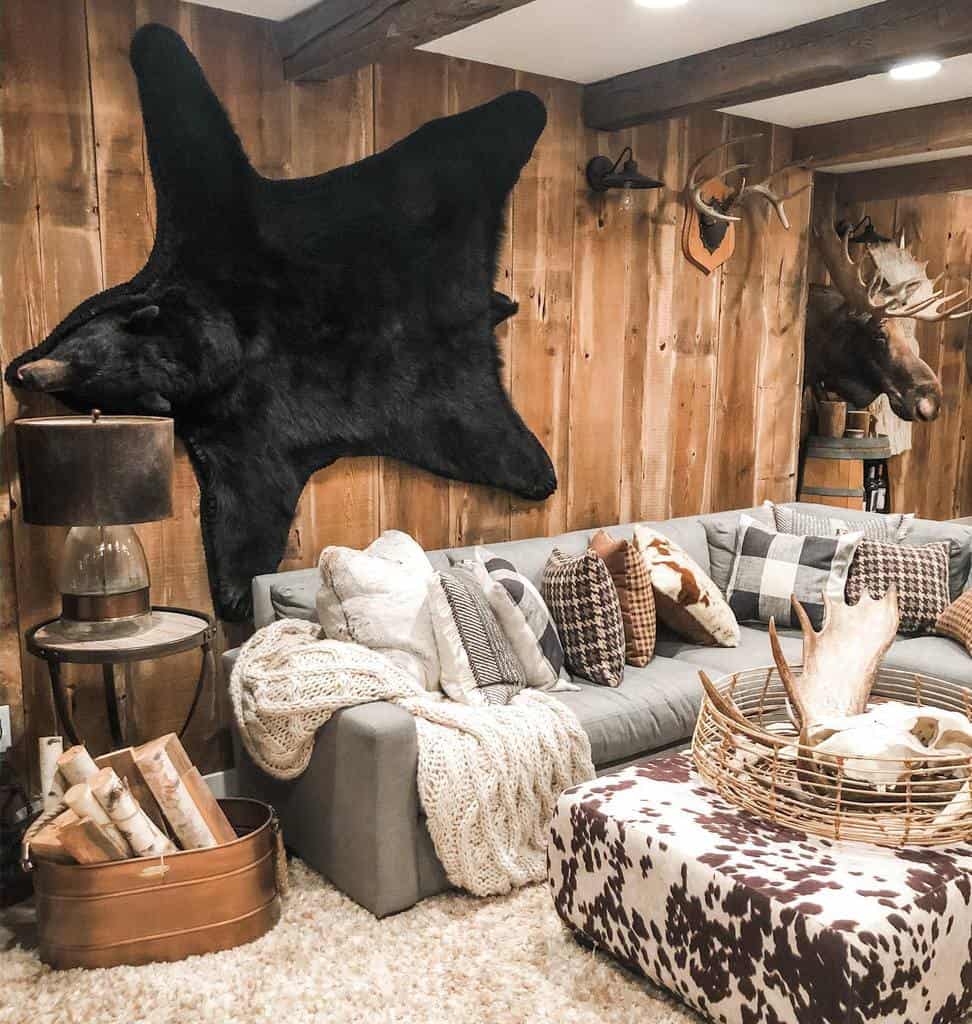
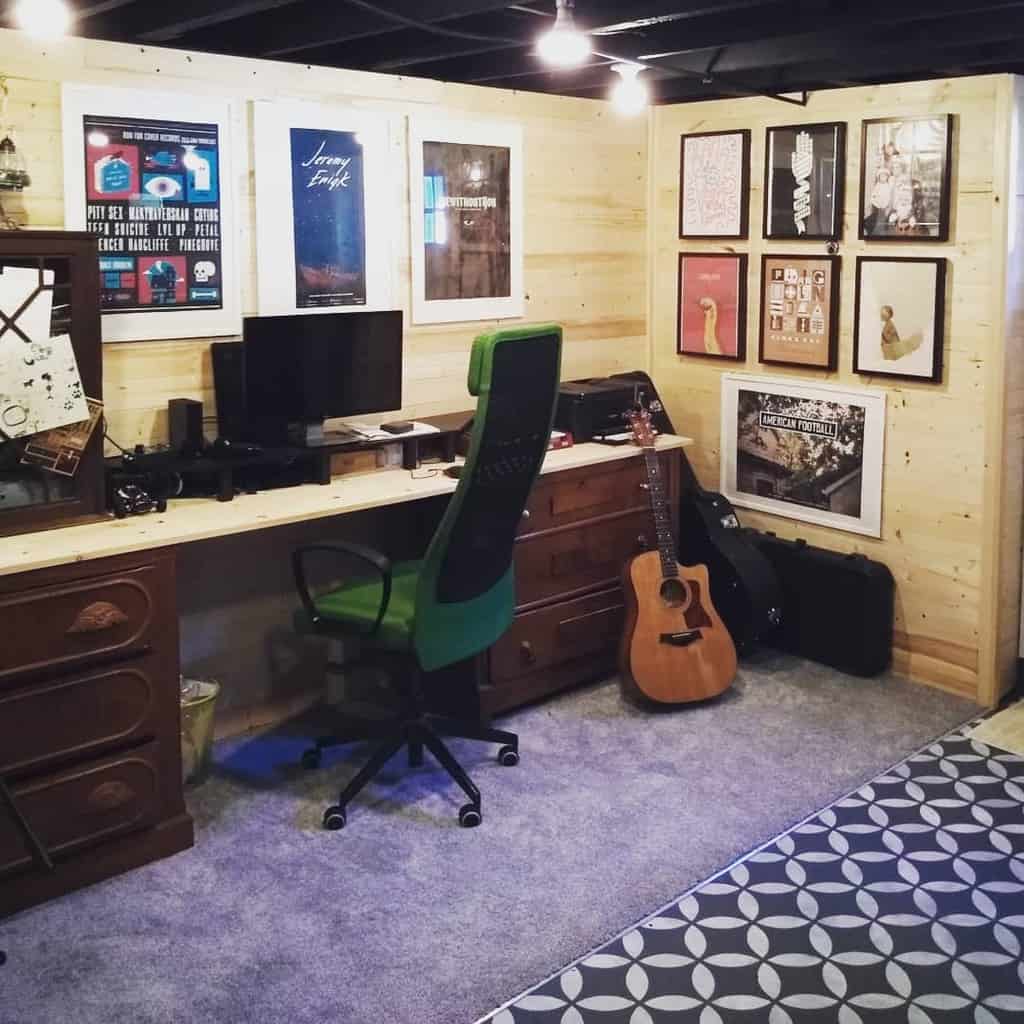
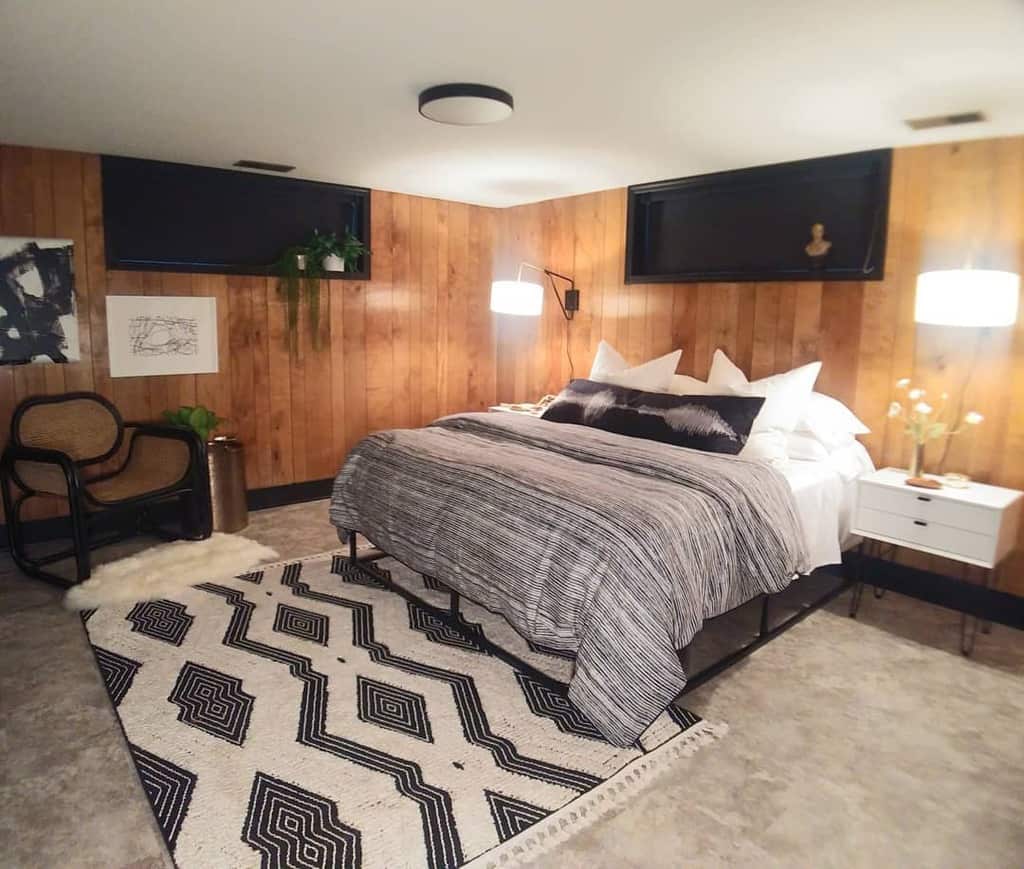
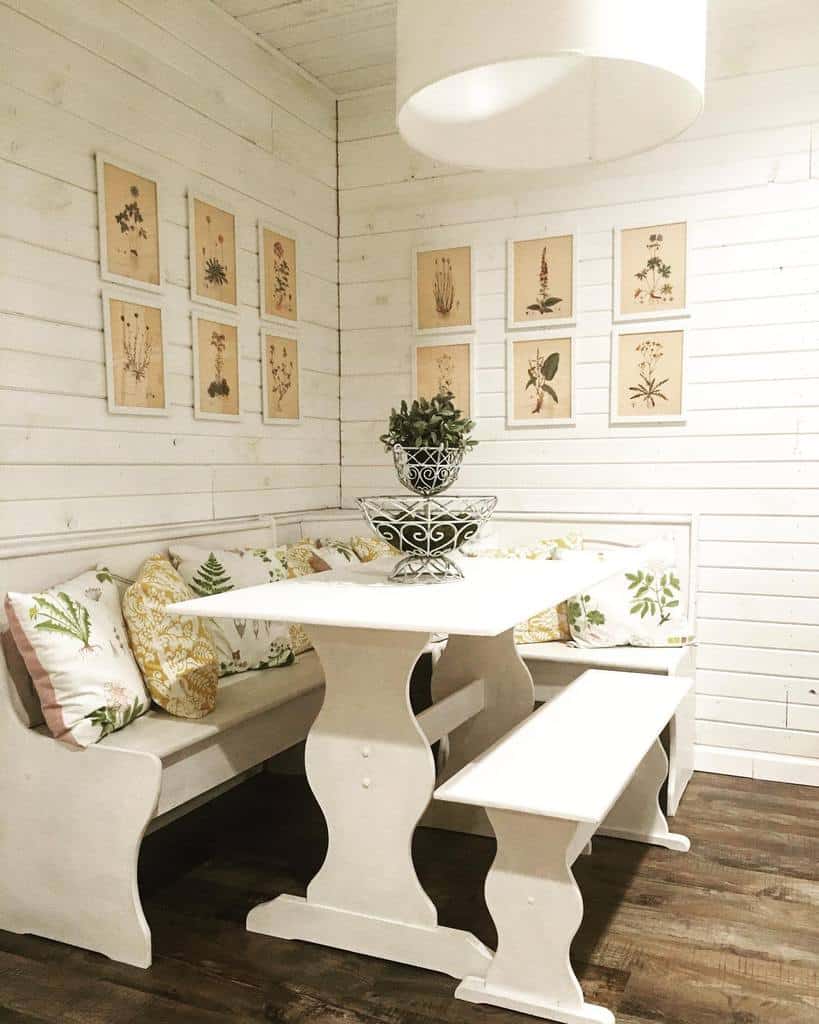
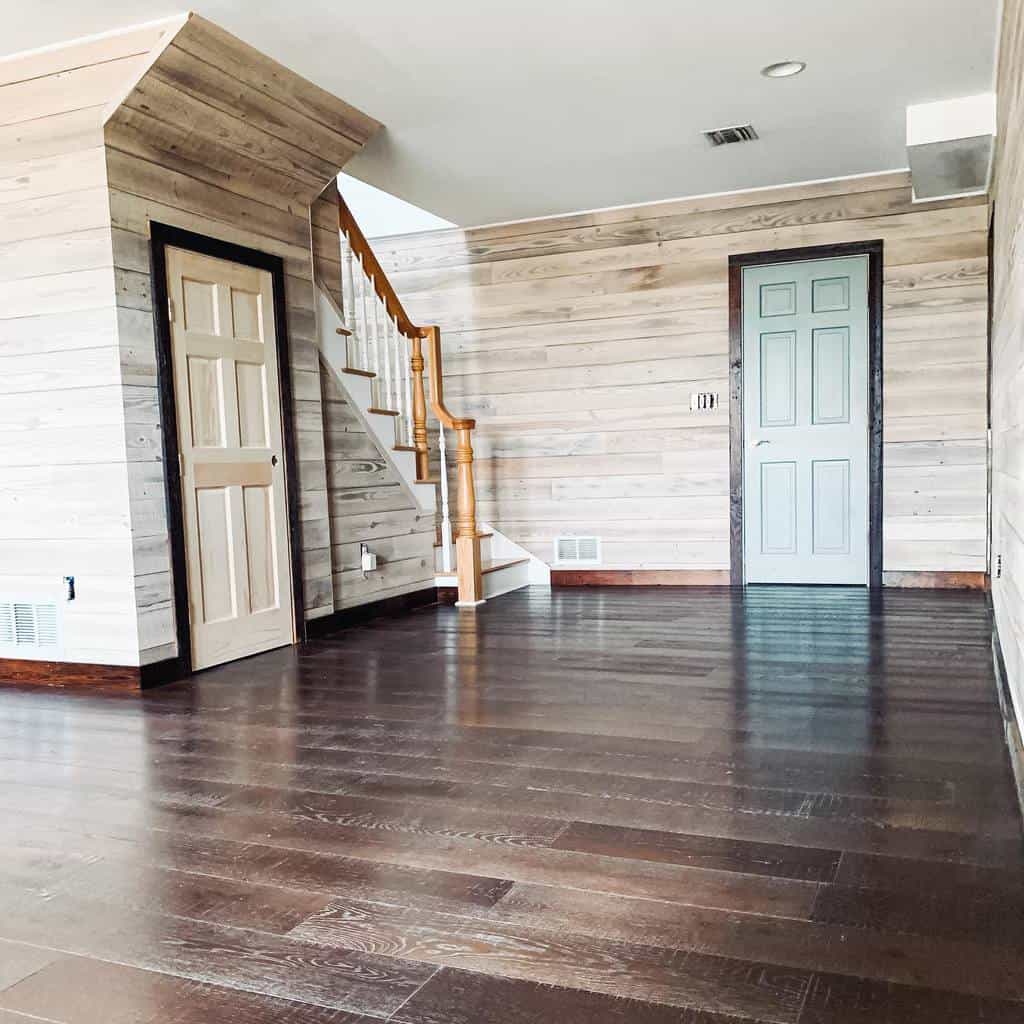
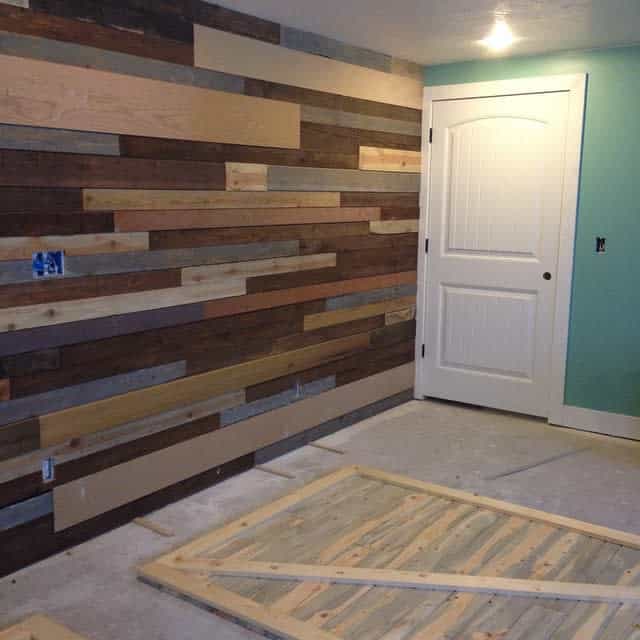
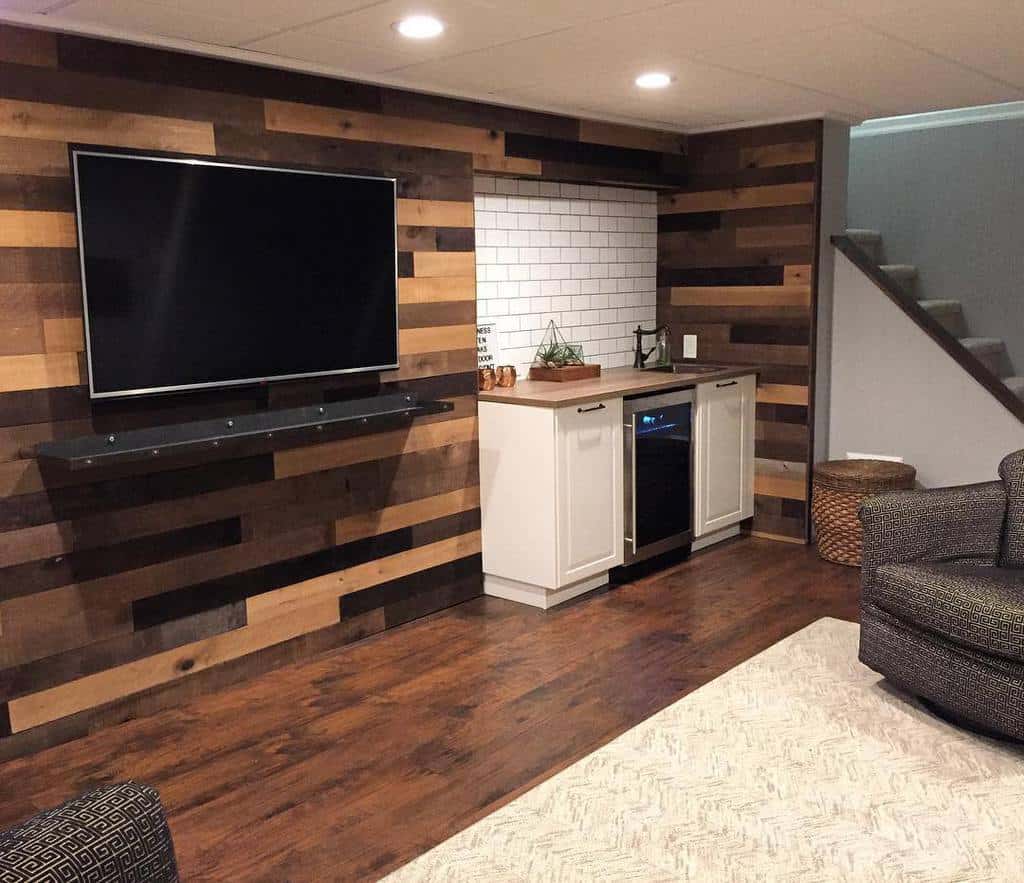
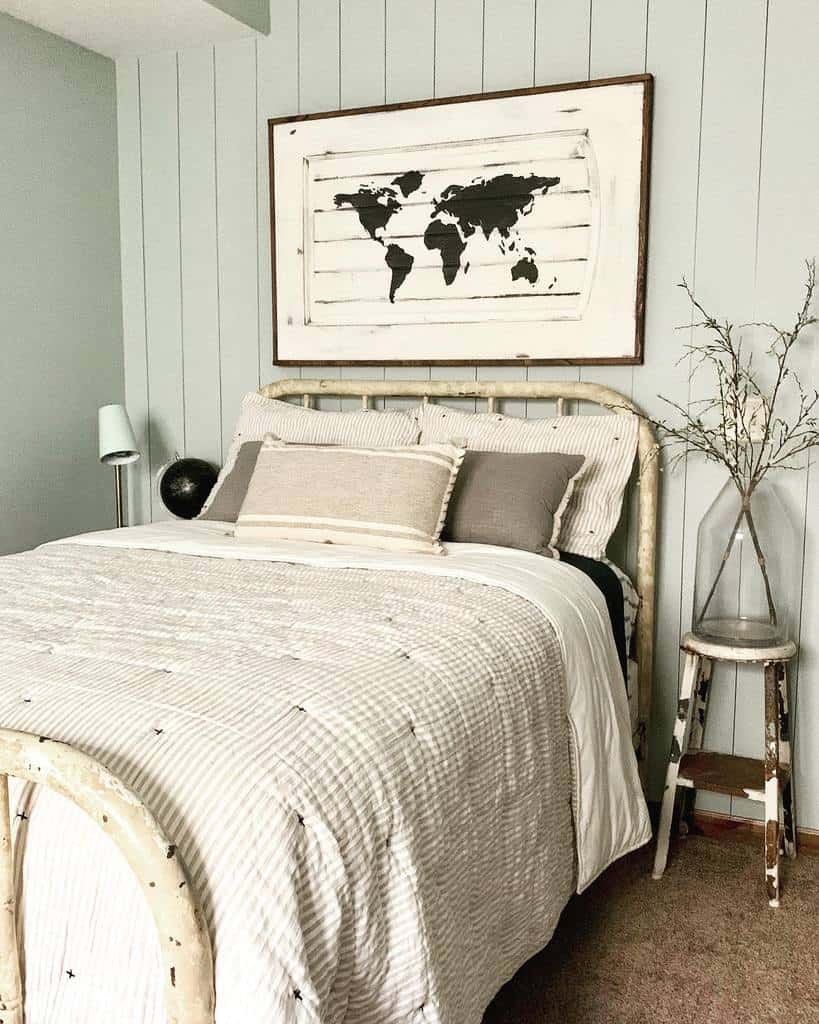
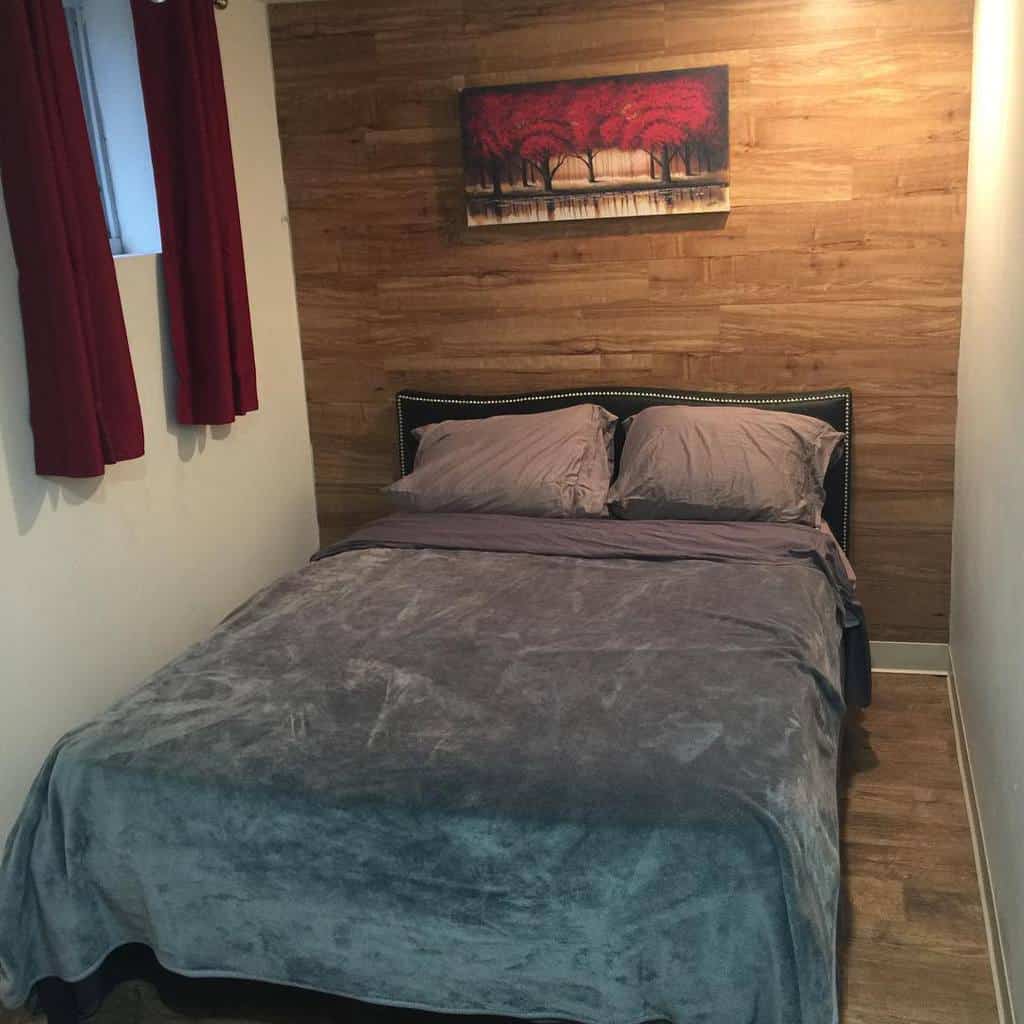
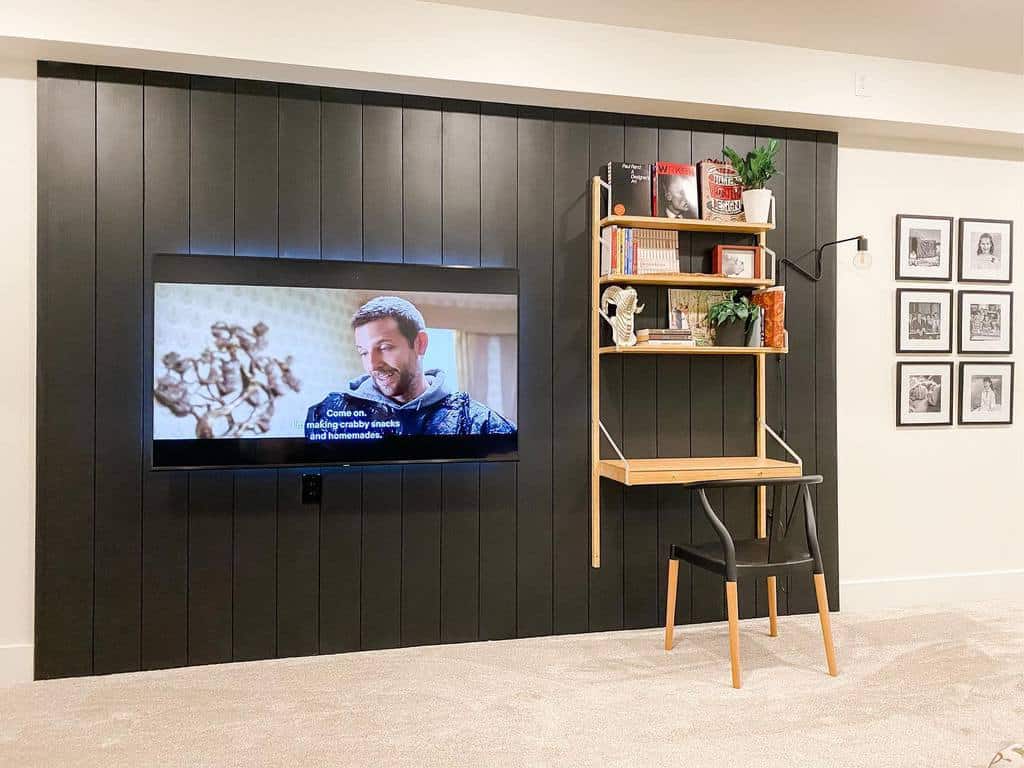
Frequently asked questions about basement walls
What is the cheapest way to finish a basement wall?
The most cost-effective way to give your basement walls a finished look is to install paneling. Panels are relatively inexpensive. Attach thin strips of wood to the concrete block with a strong adhesive. Then attach the paneling to the wooden strips with wood screws.
Do I need to seal my basement walls before completion?
Concrete is porous and tends to absorb moisture from the soil on the outside of your basement. This moisture seeps through the concrete into your basement. Now your basement area feels damp and uncomfortable. Sealing your basement walls prevents this moisture from seeping in and helps your basement feel drier and cozier.
What can I use instead of drywall for basement walls?
While drywall is a common choice for finishing basement walls, it is not your only option. You can also use cement board, which is similar to drywall. Other options include wood paneling or EPS foam panels. These alternatives are installed on traditional wood frames similar to drywall.
 TopsDecor.com Home Decor Ideas
TopsDecor.com Home Decor Ideas
